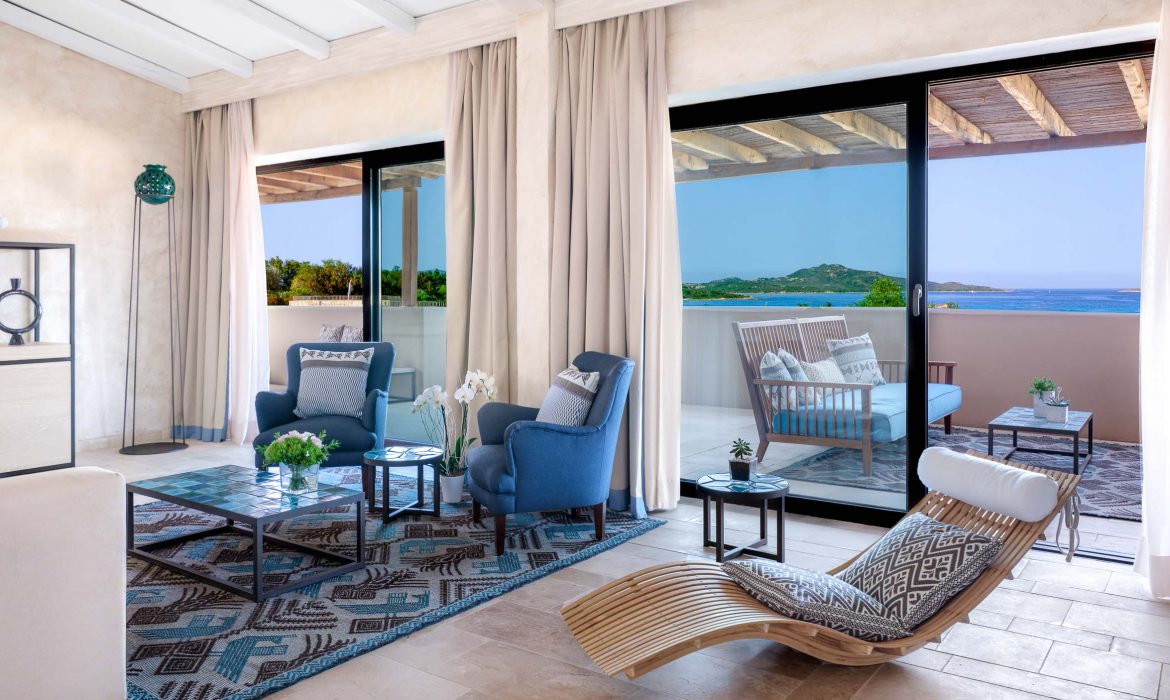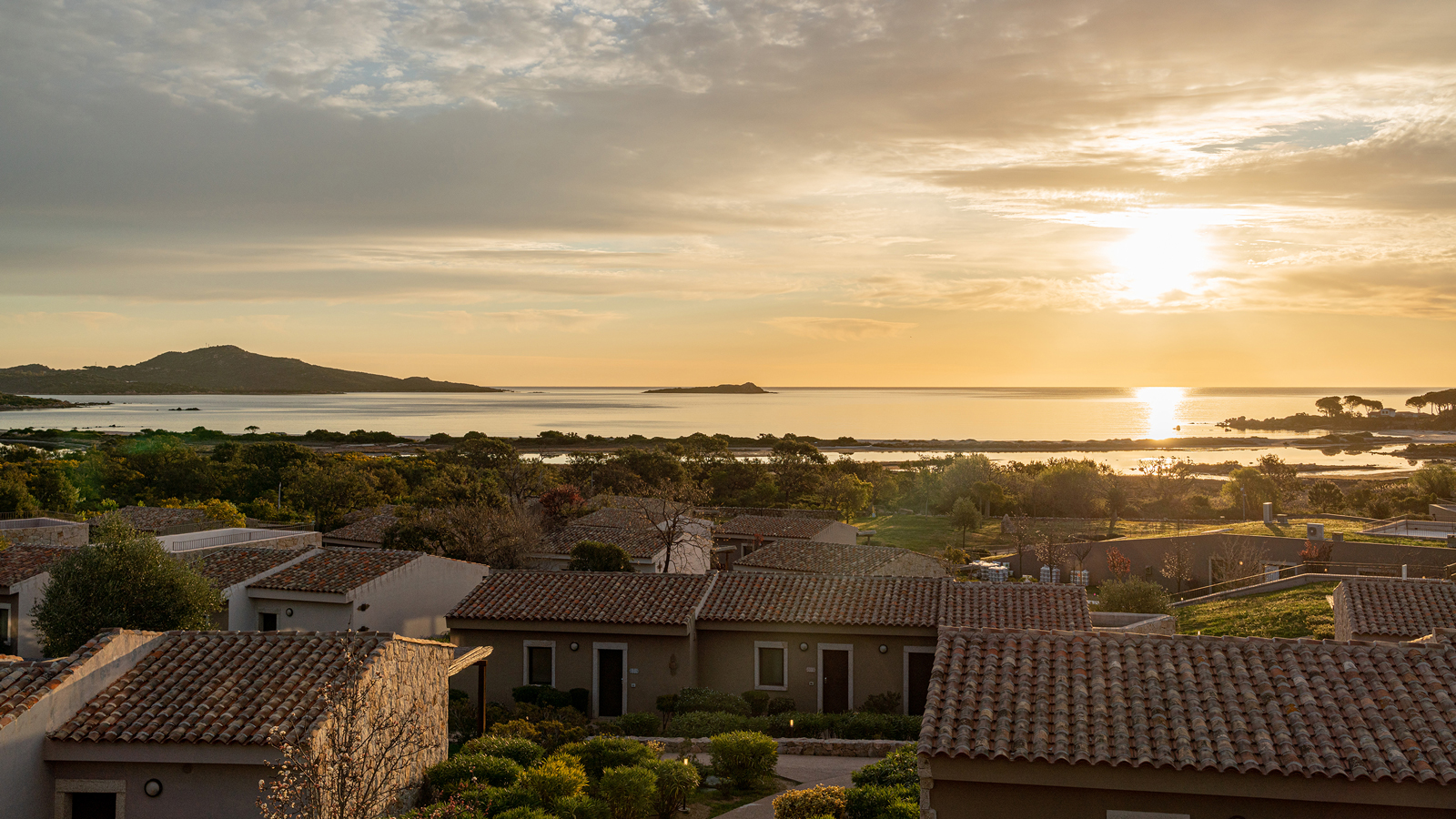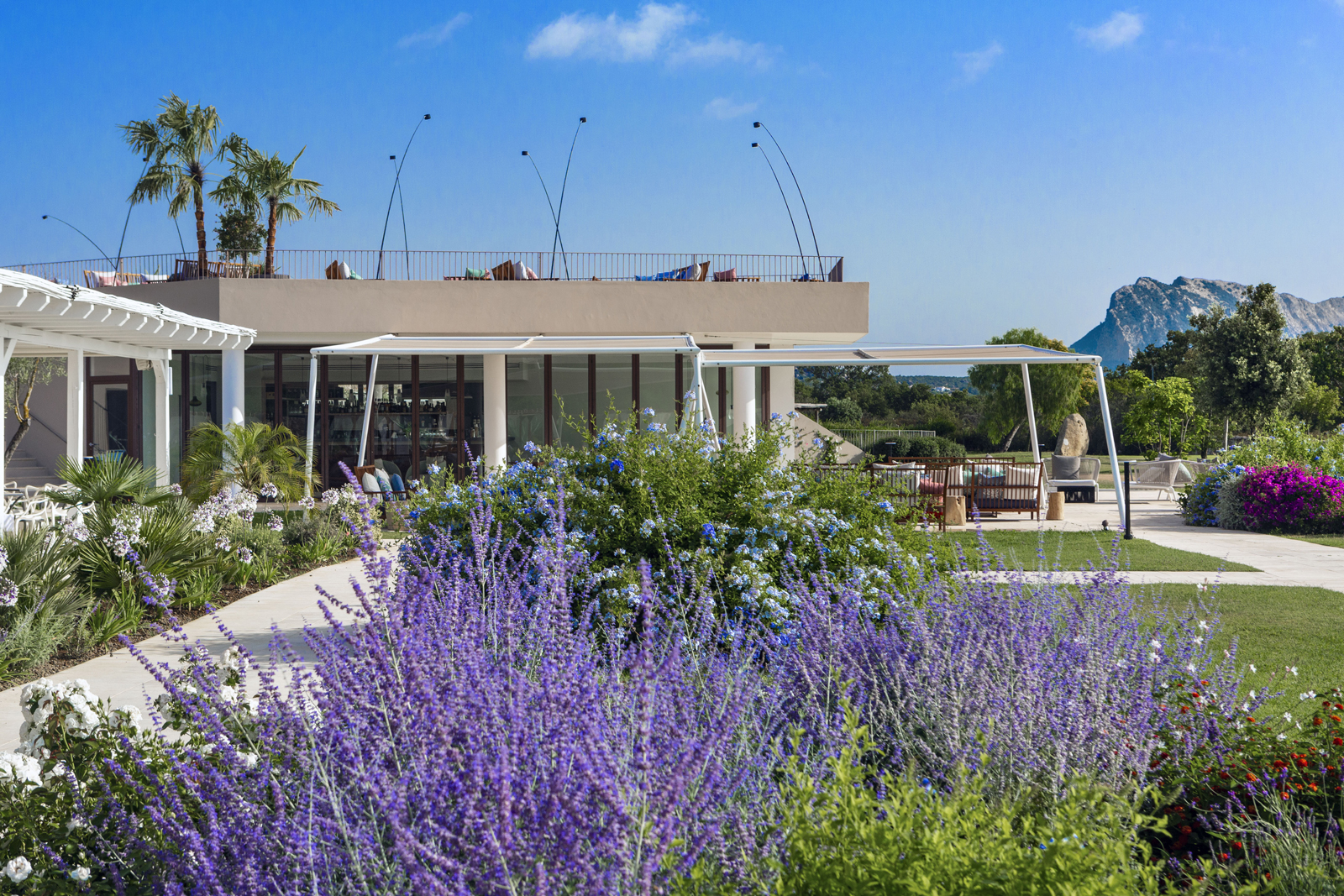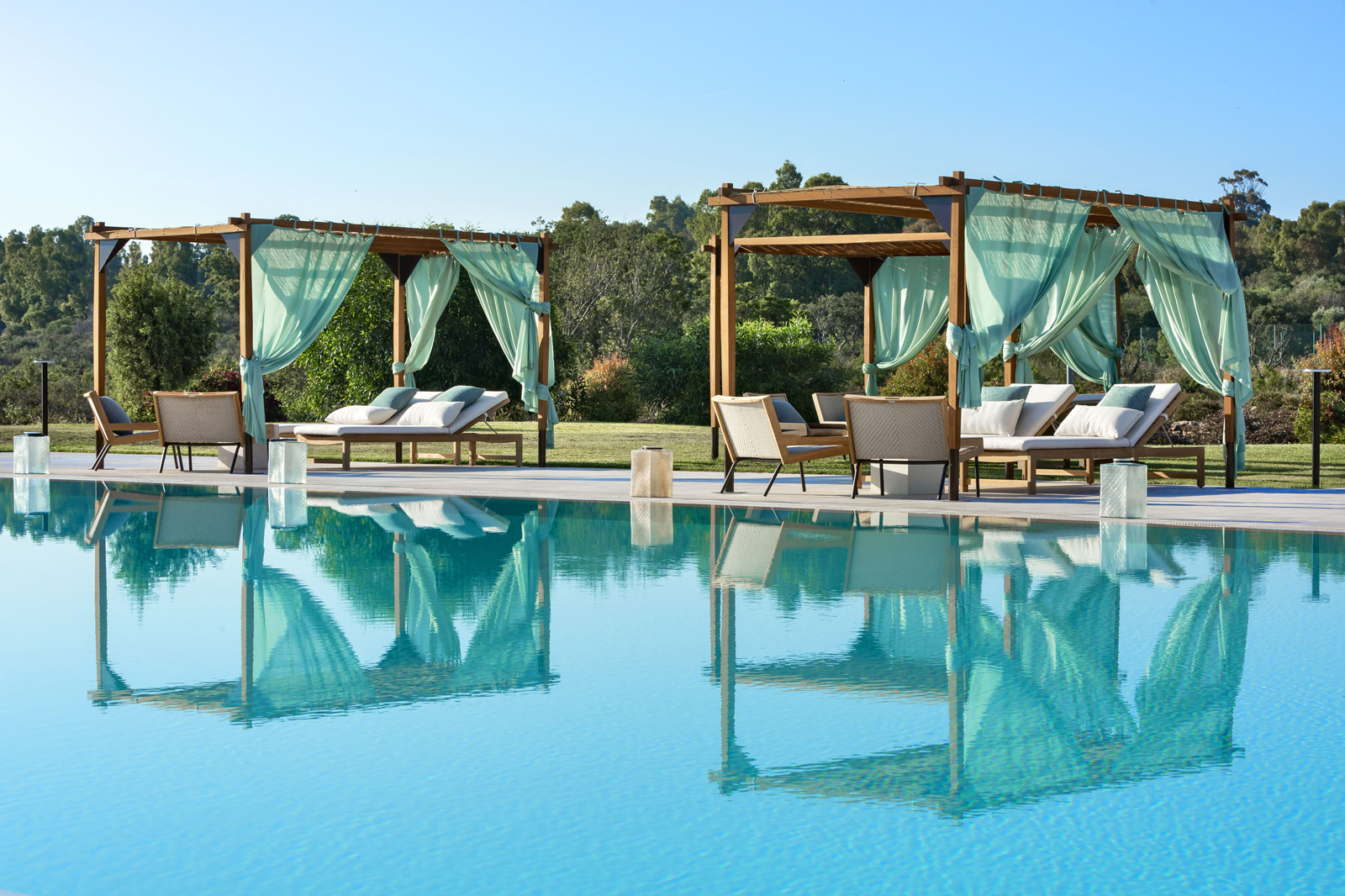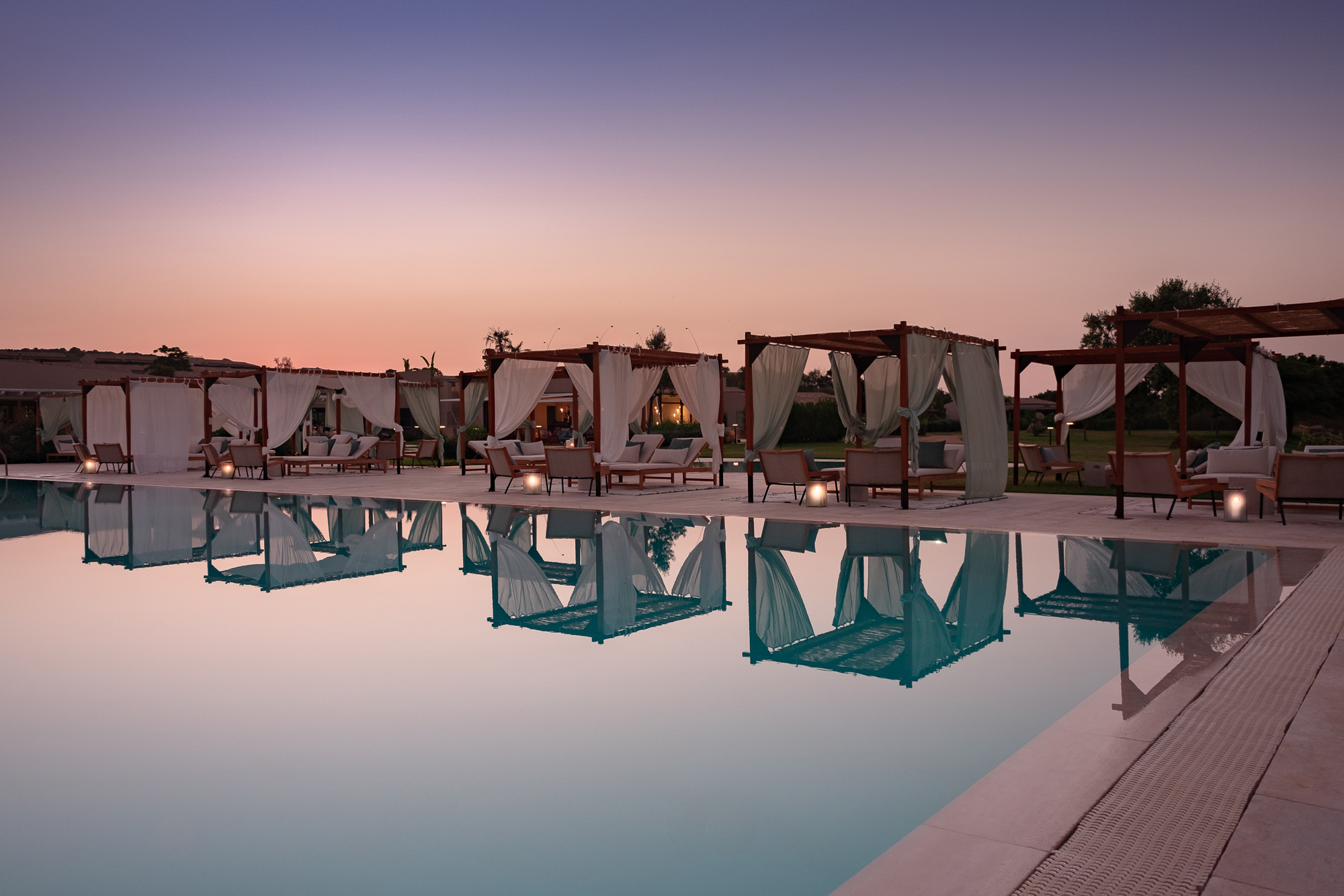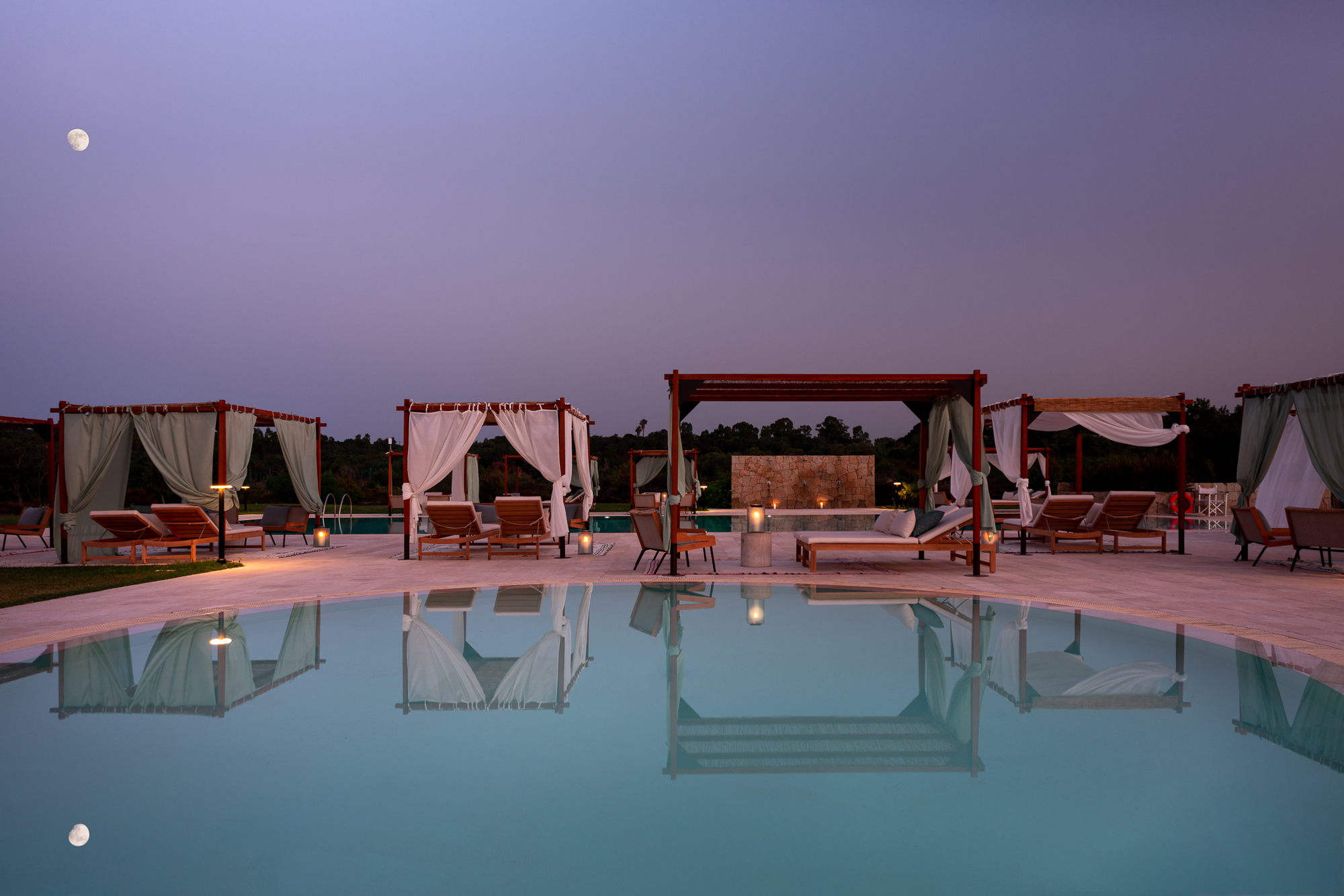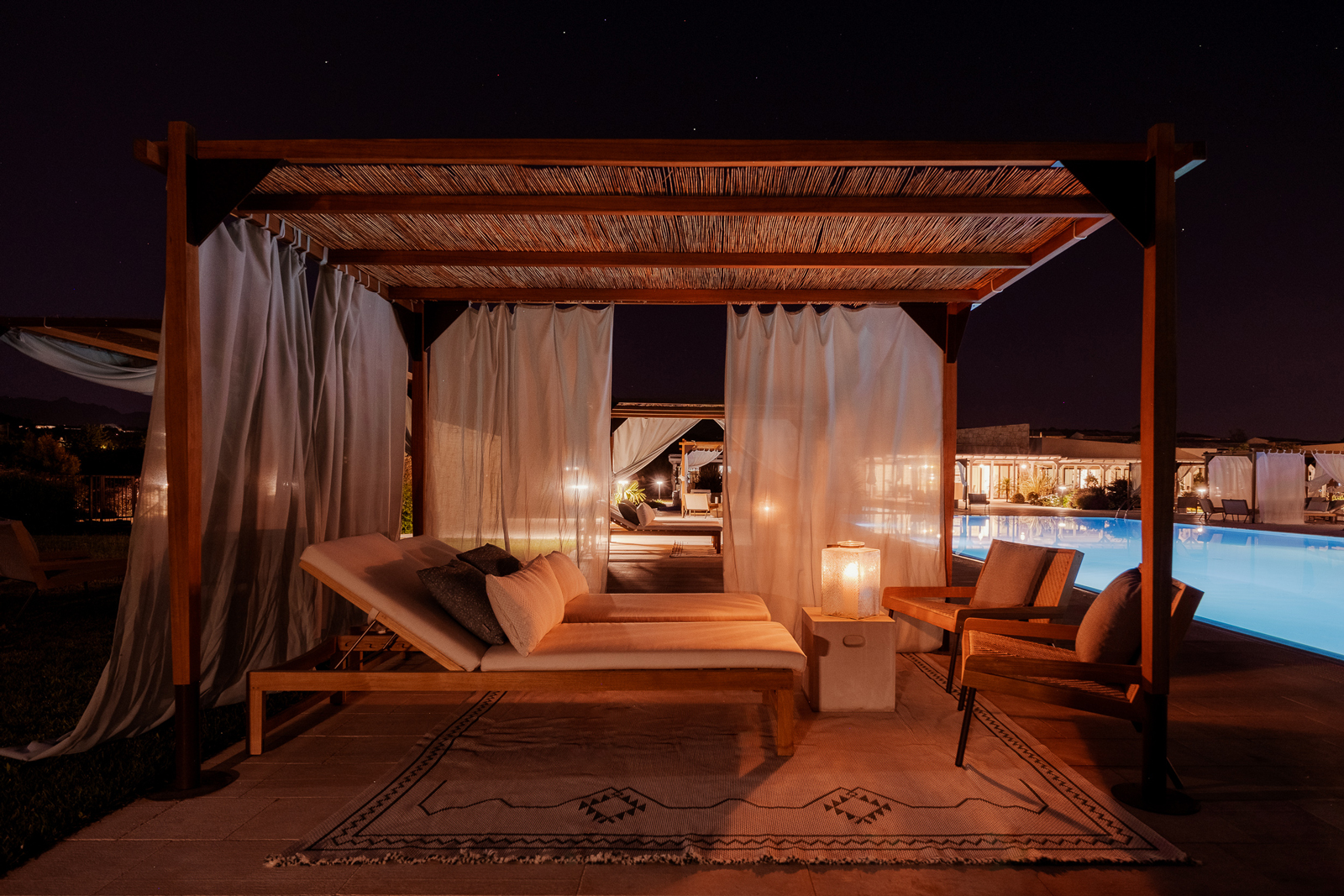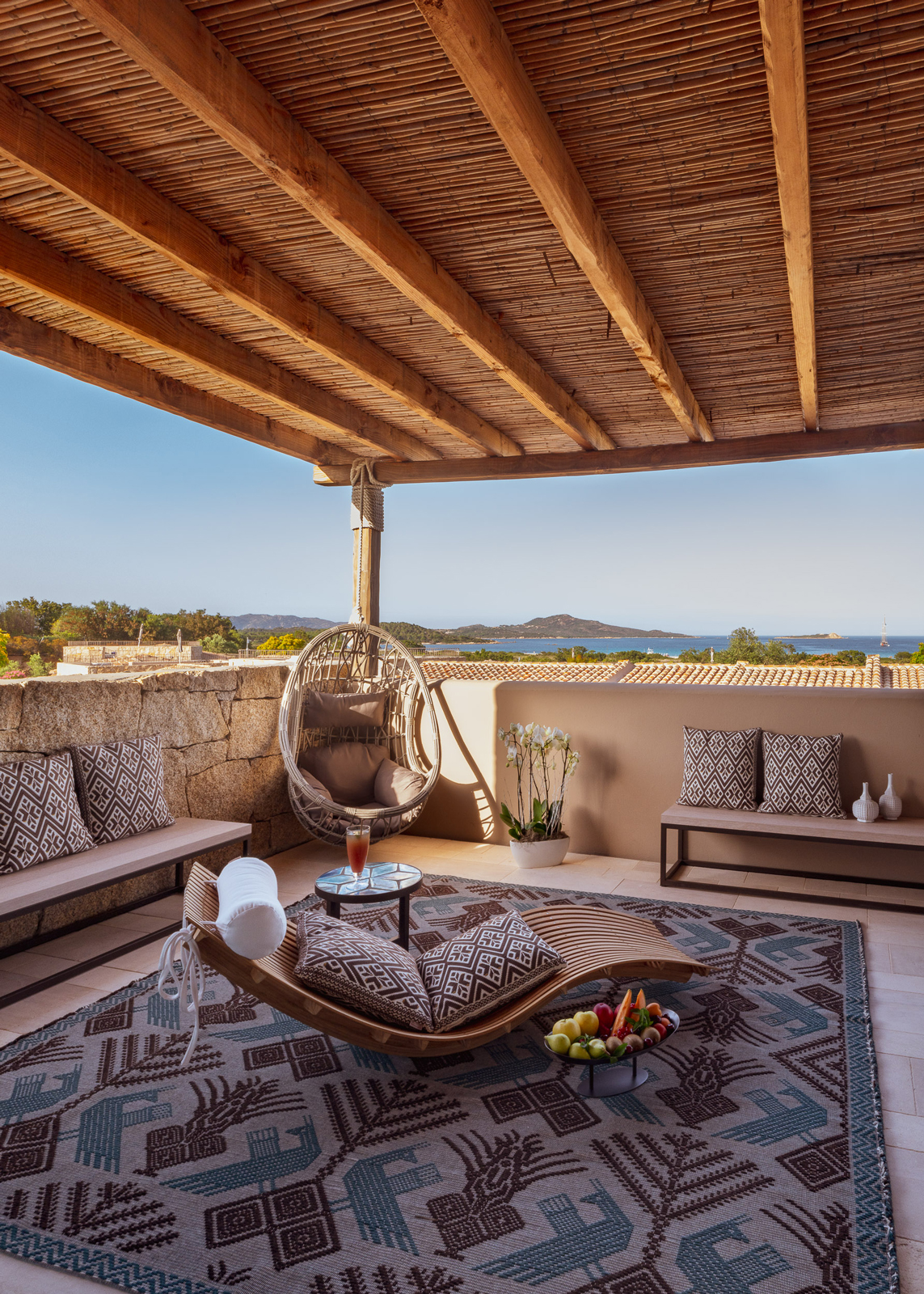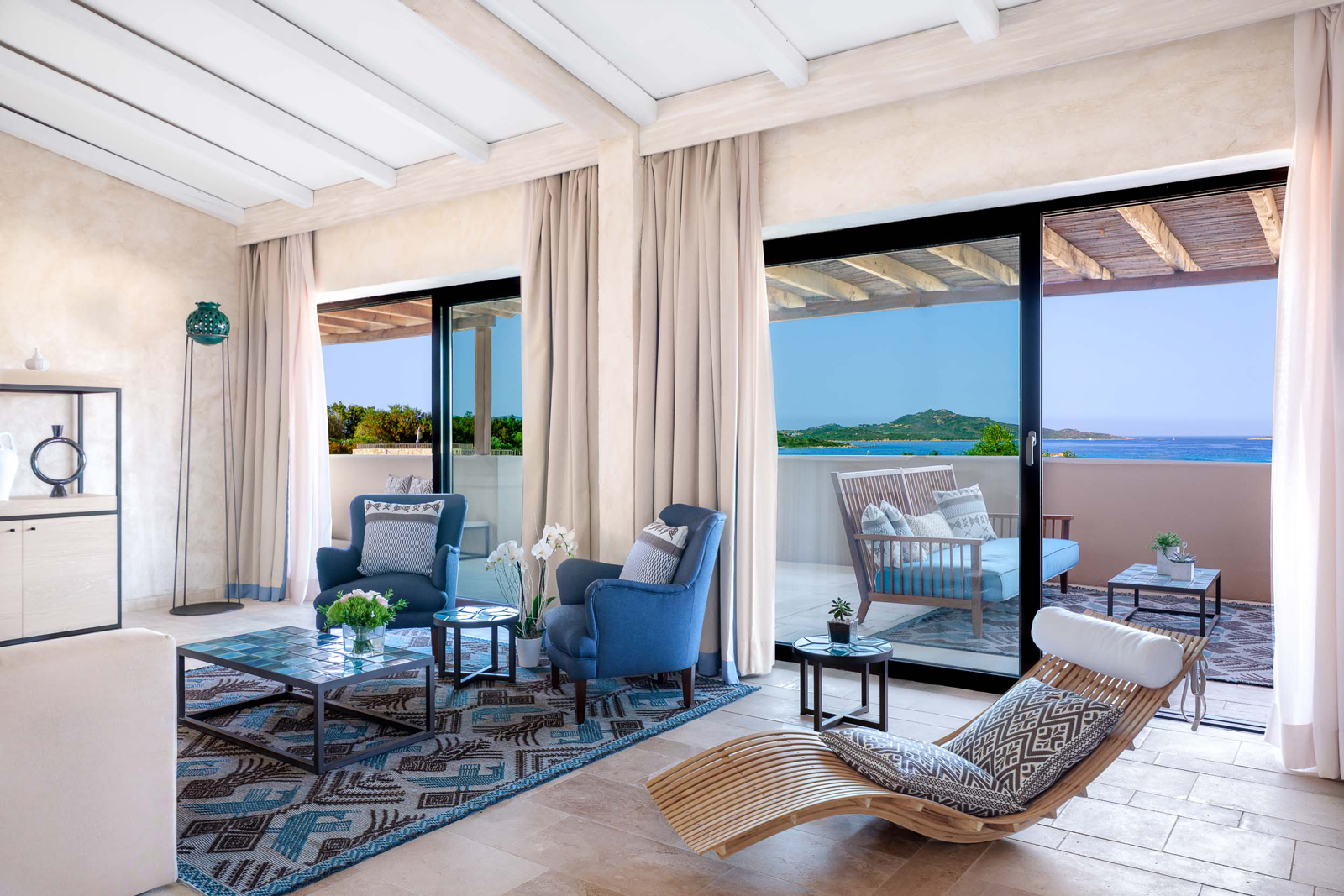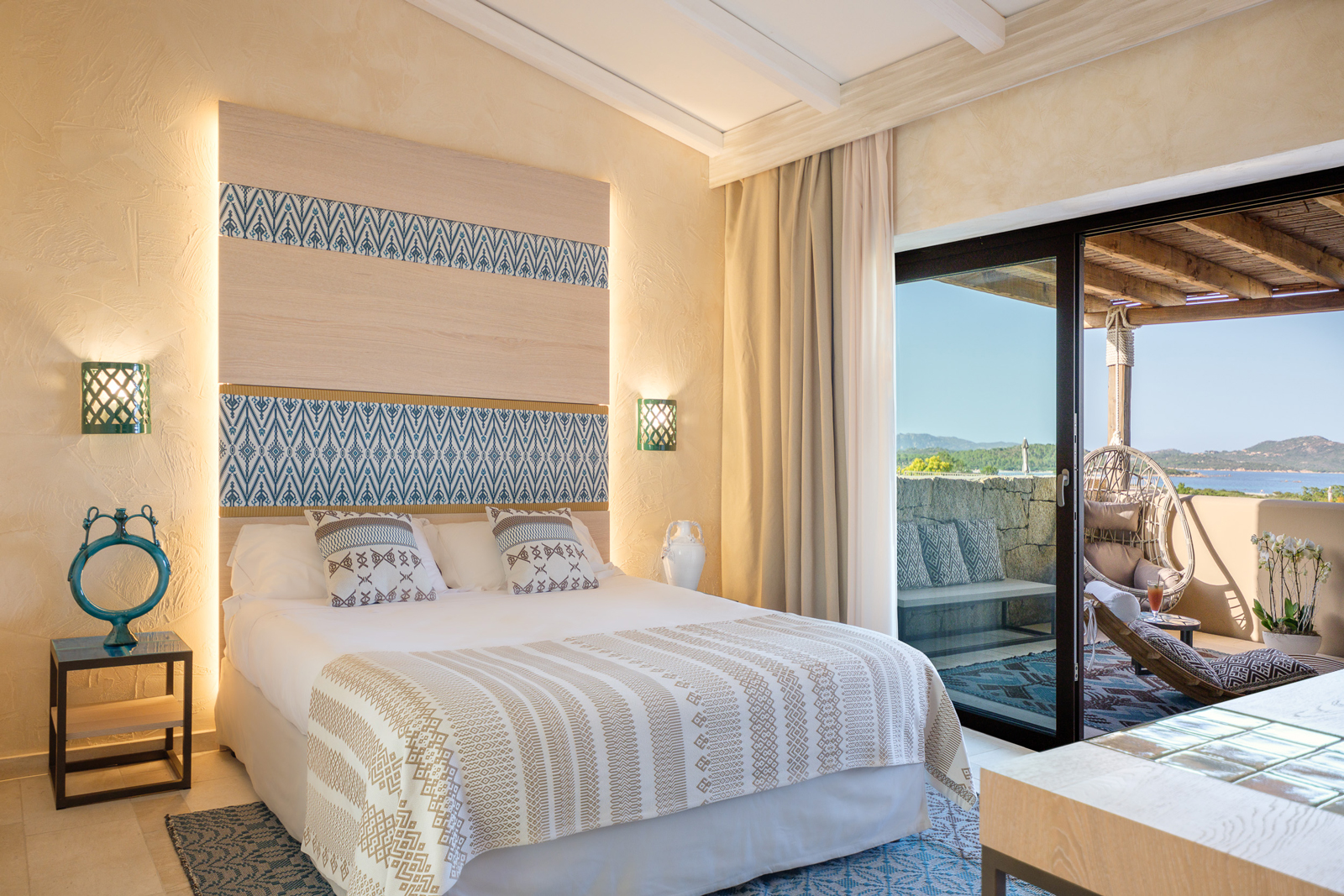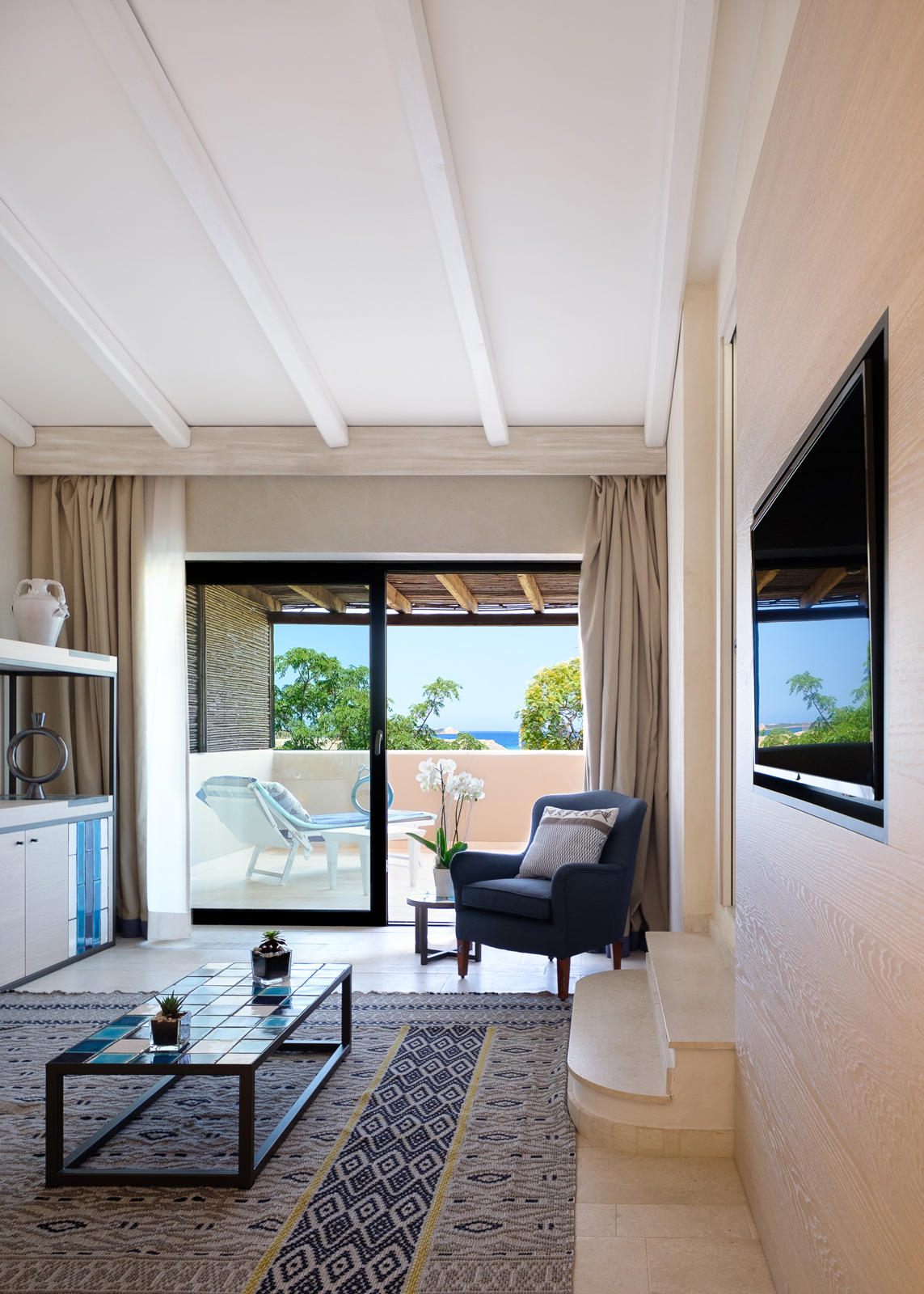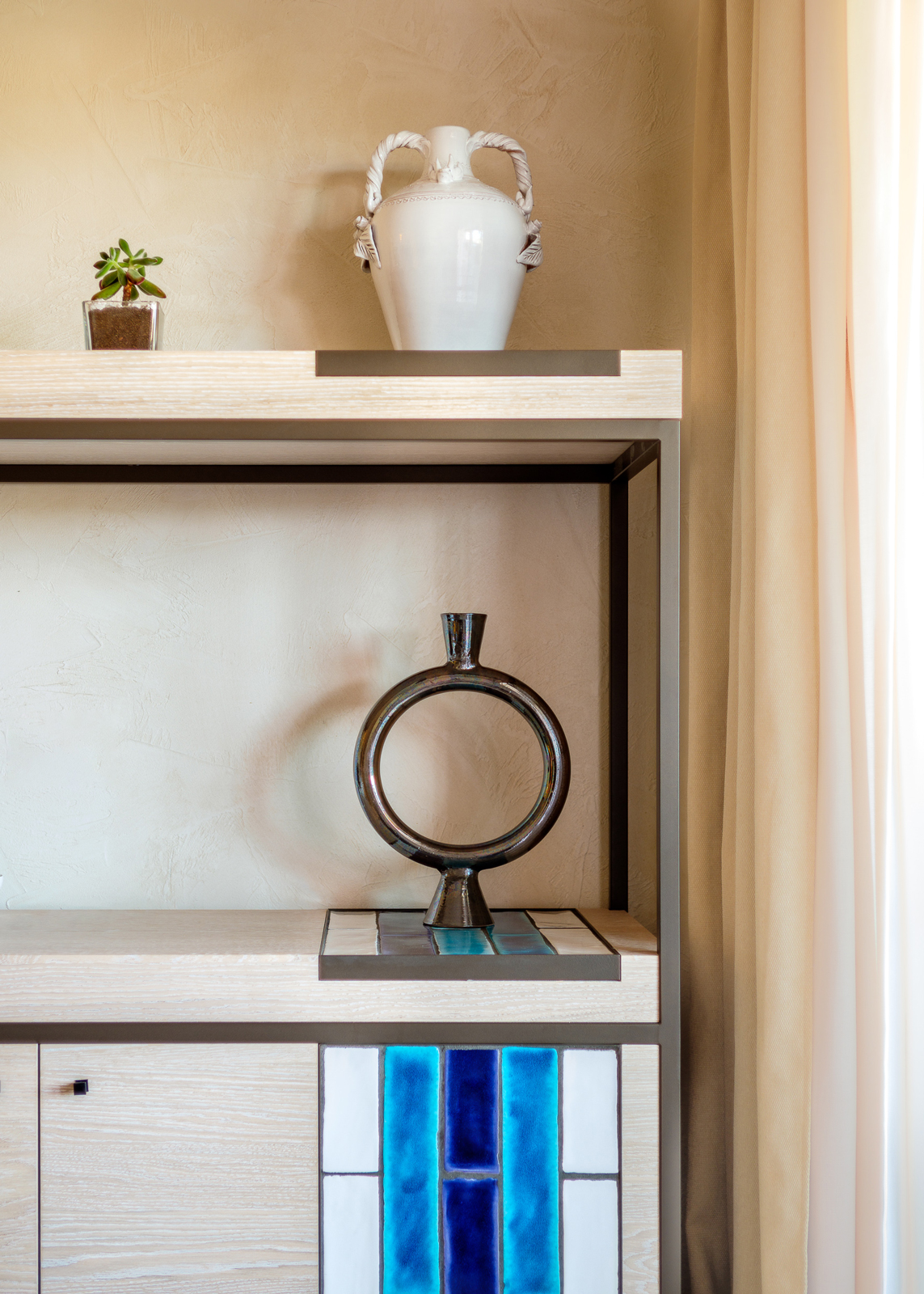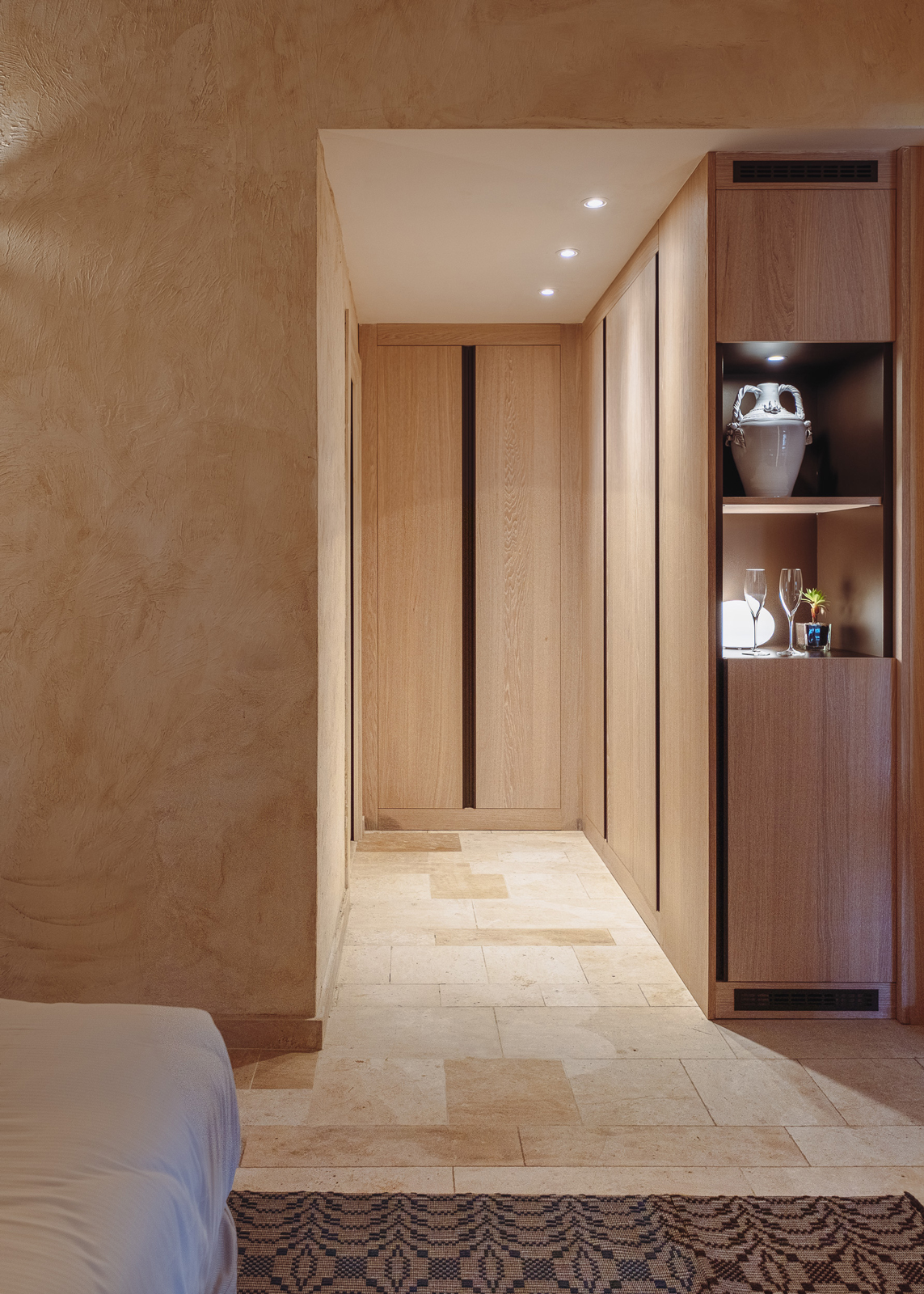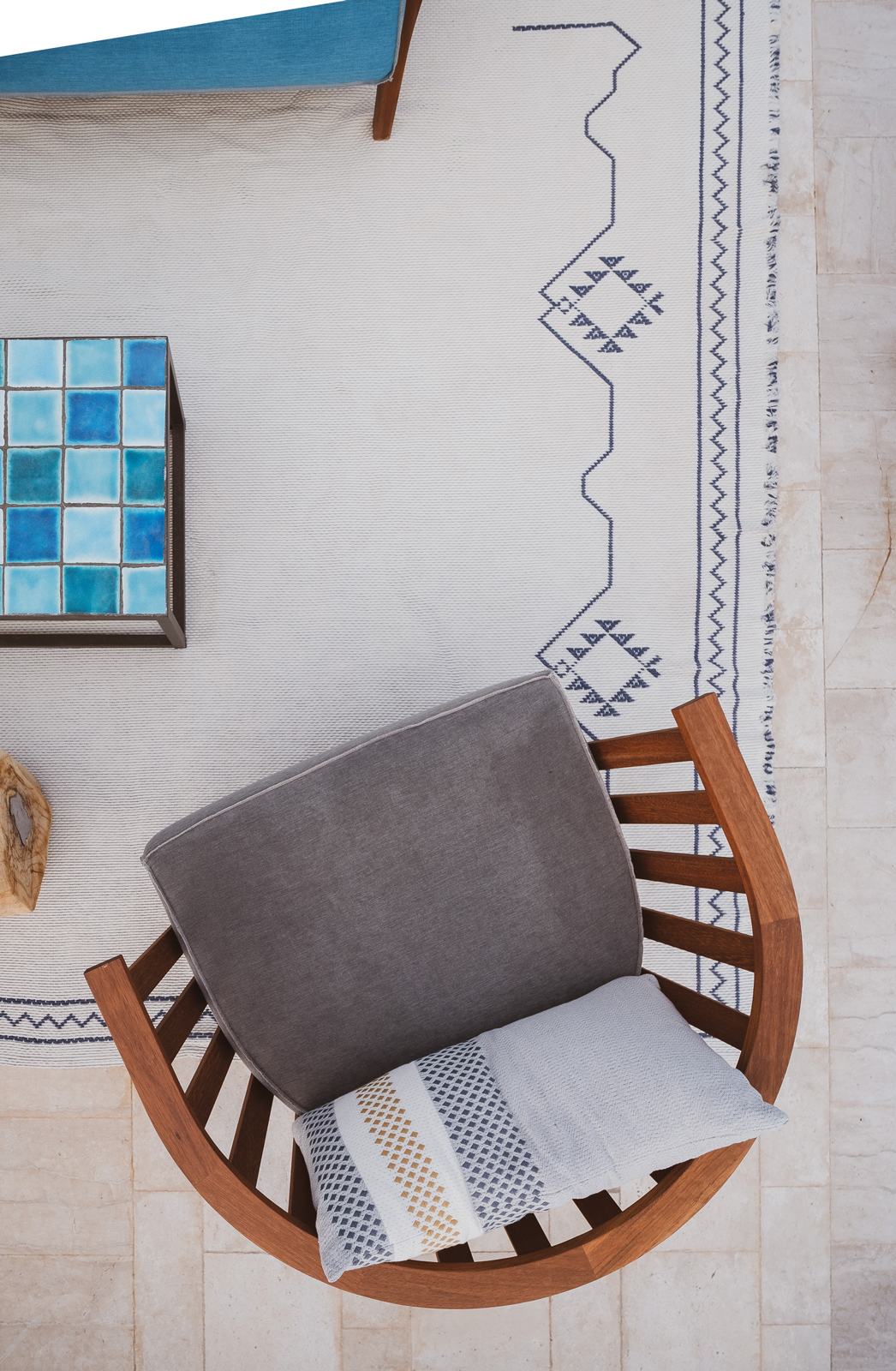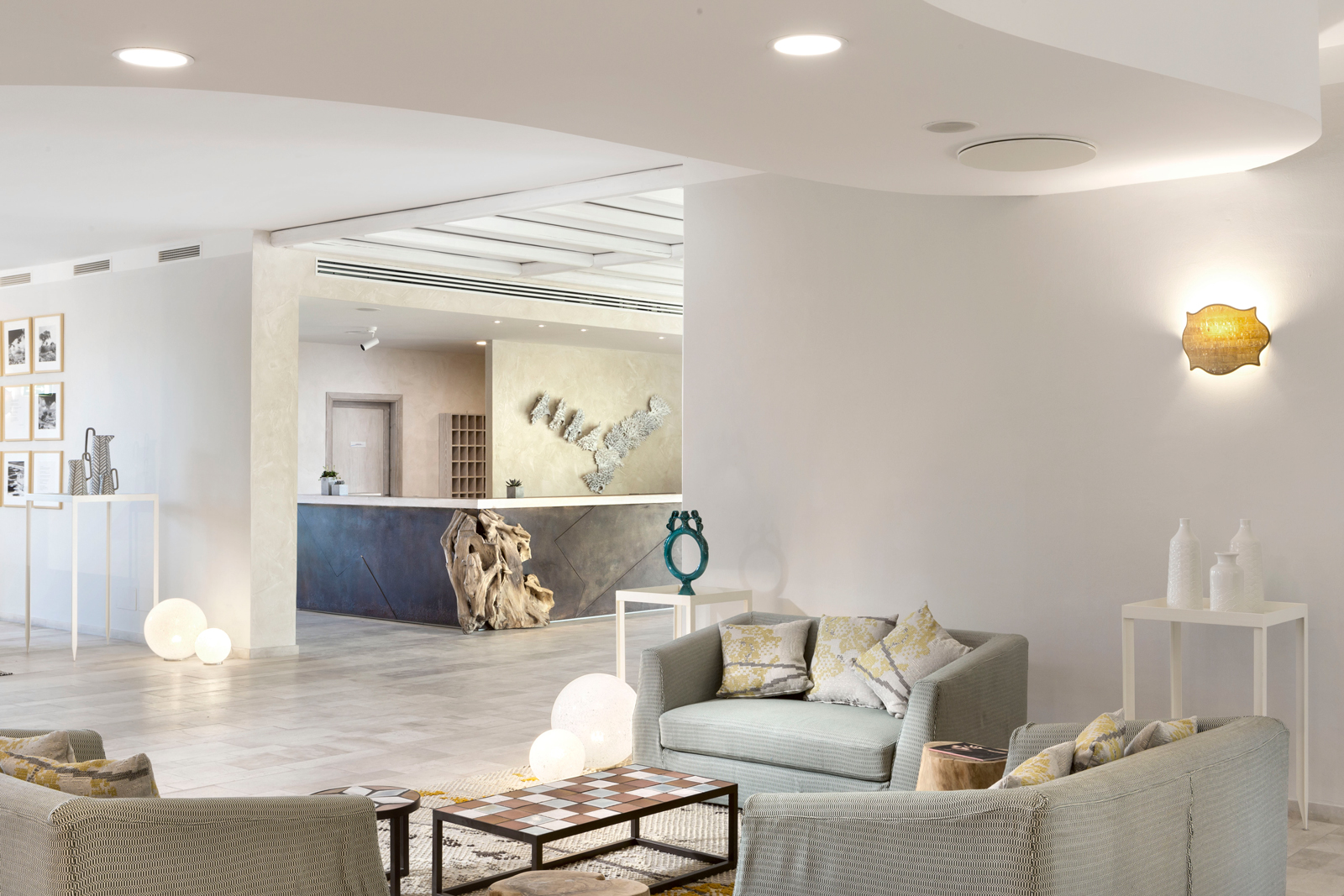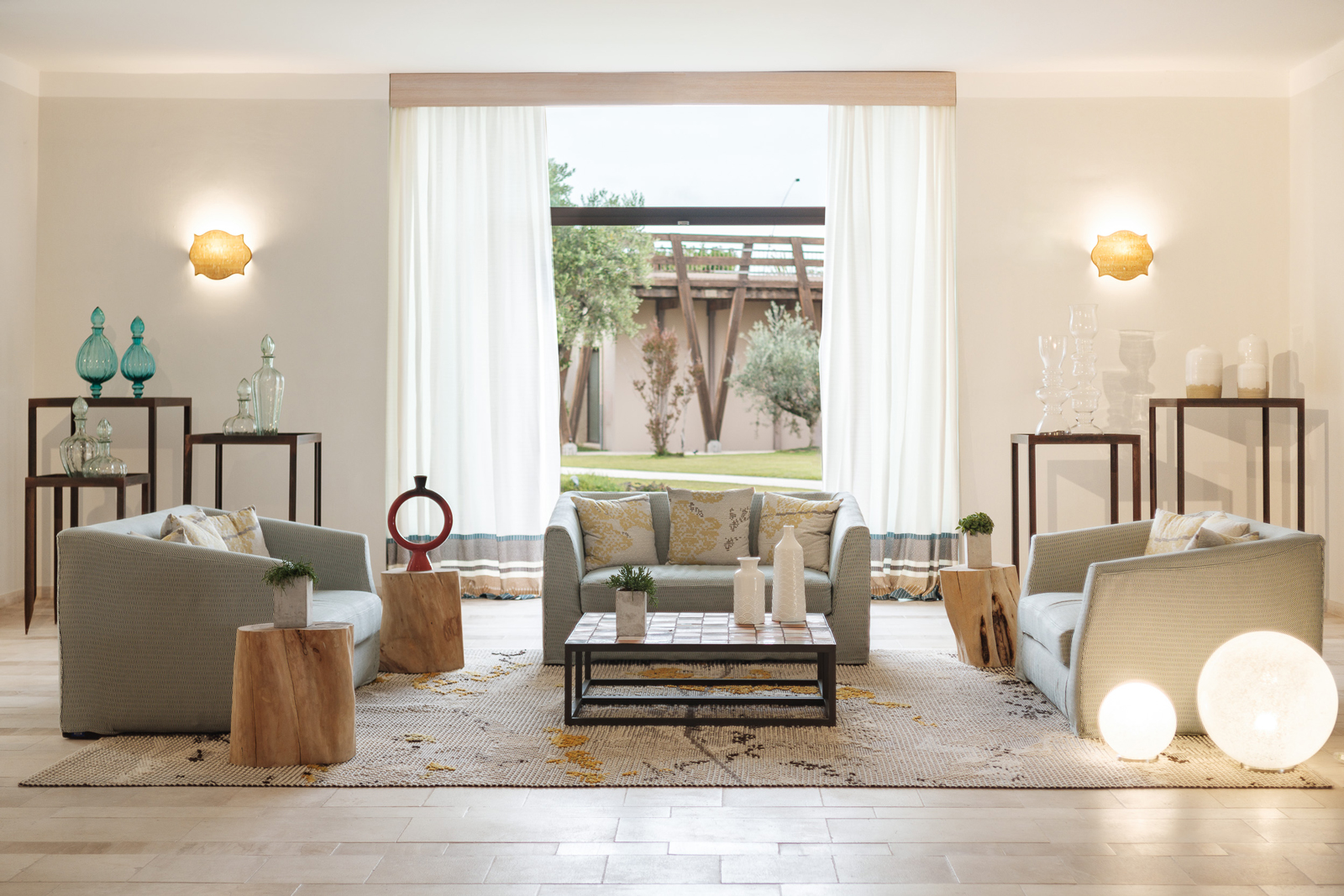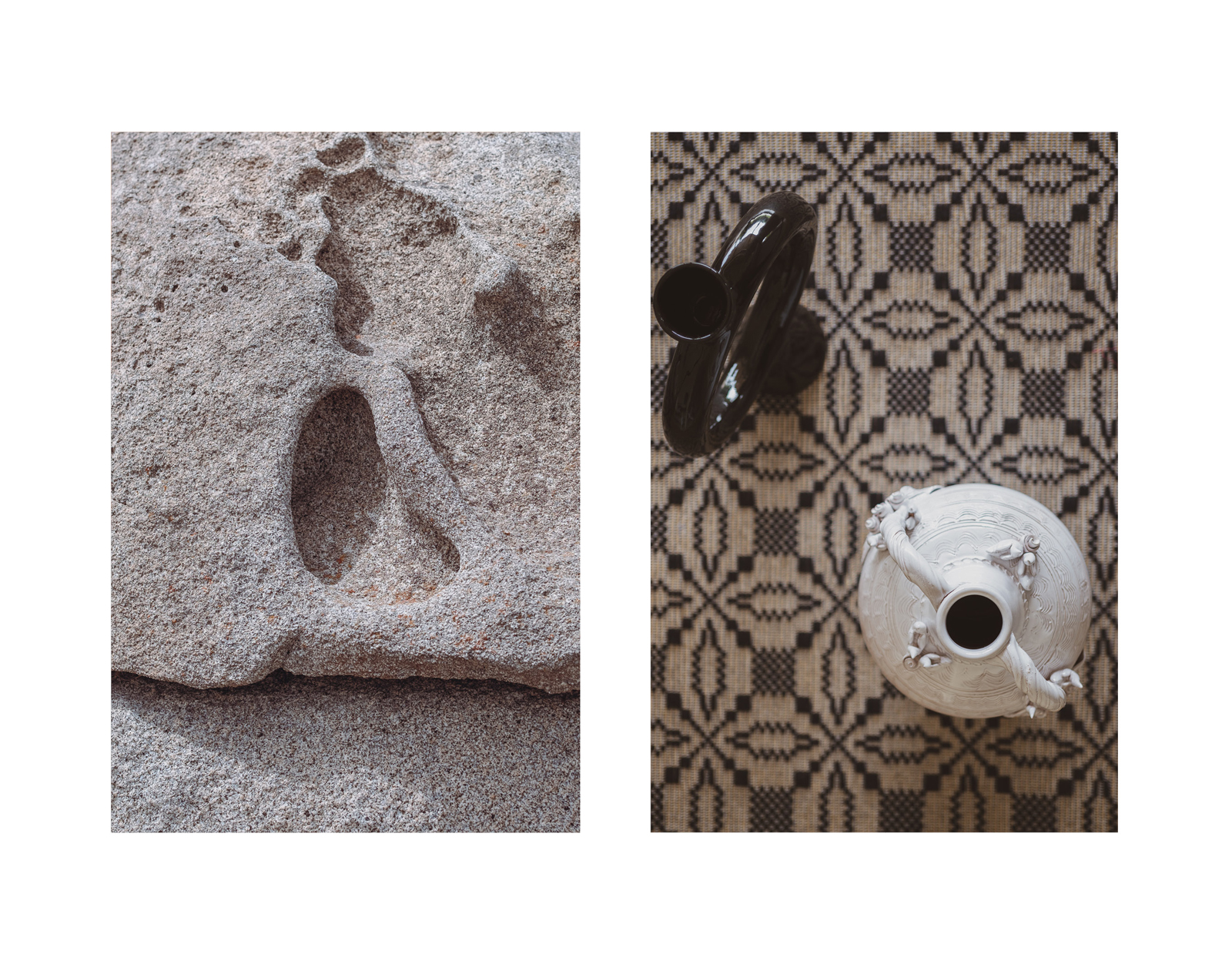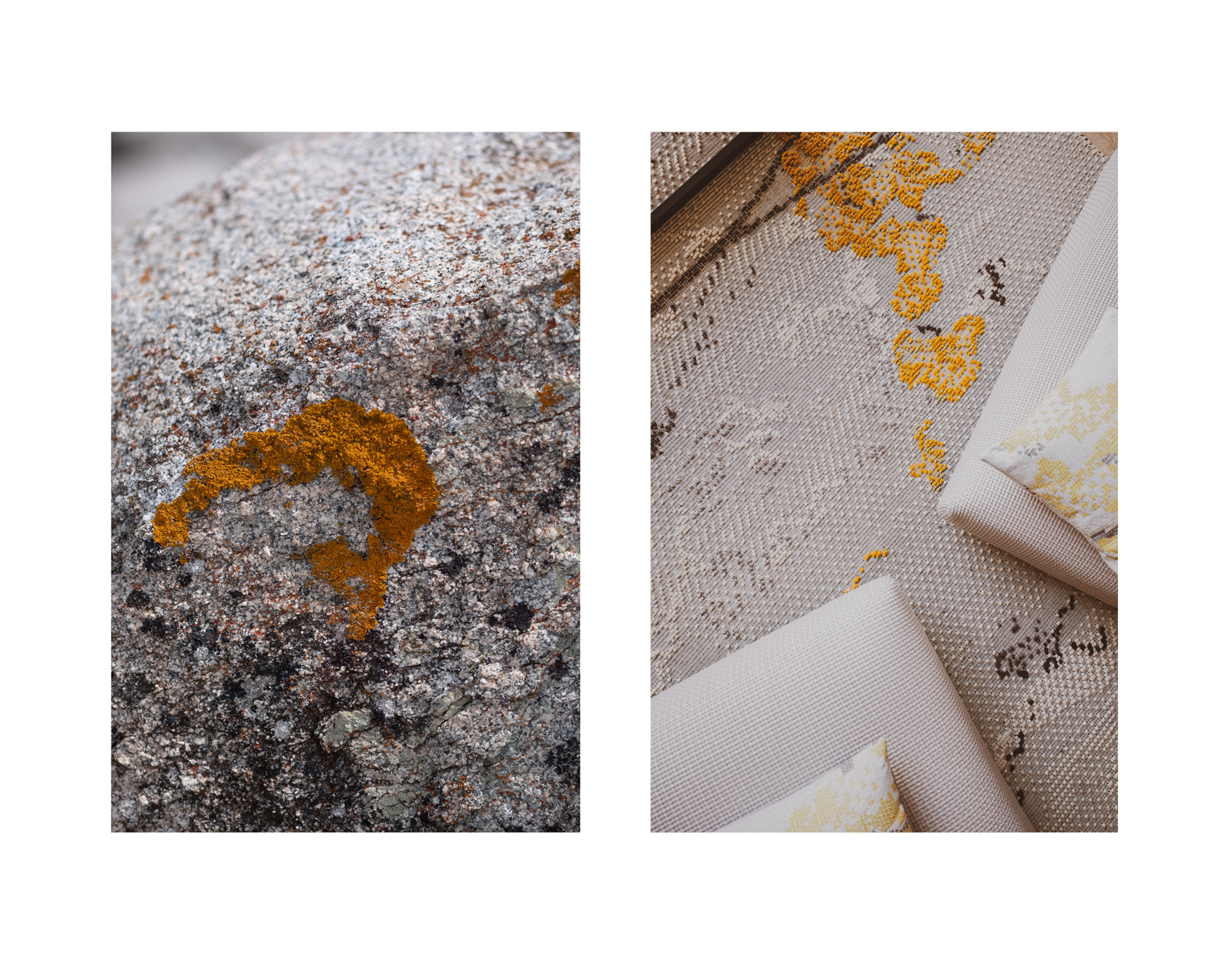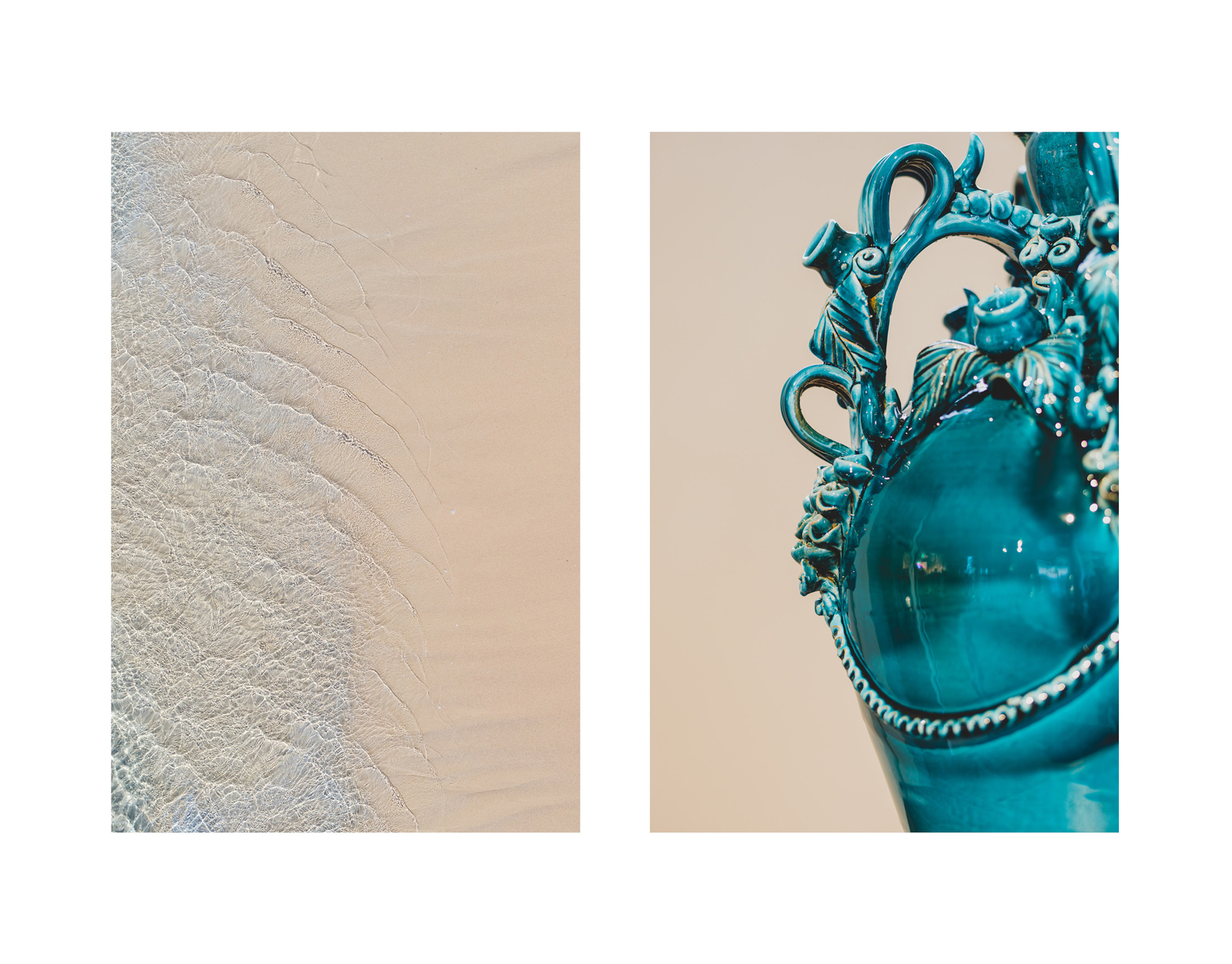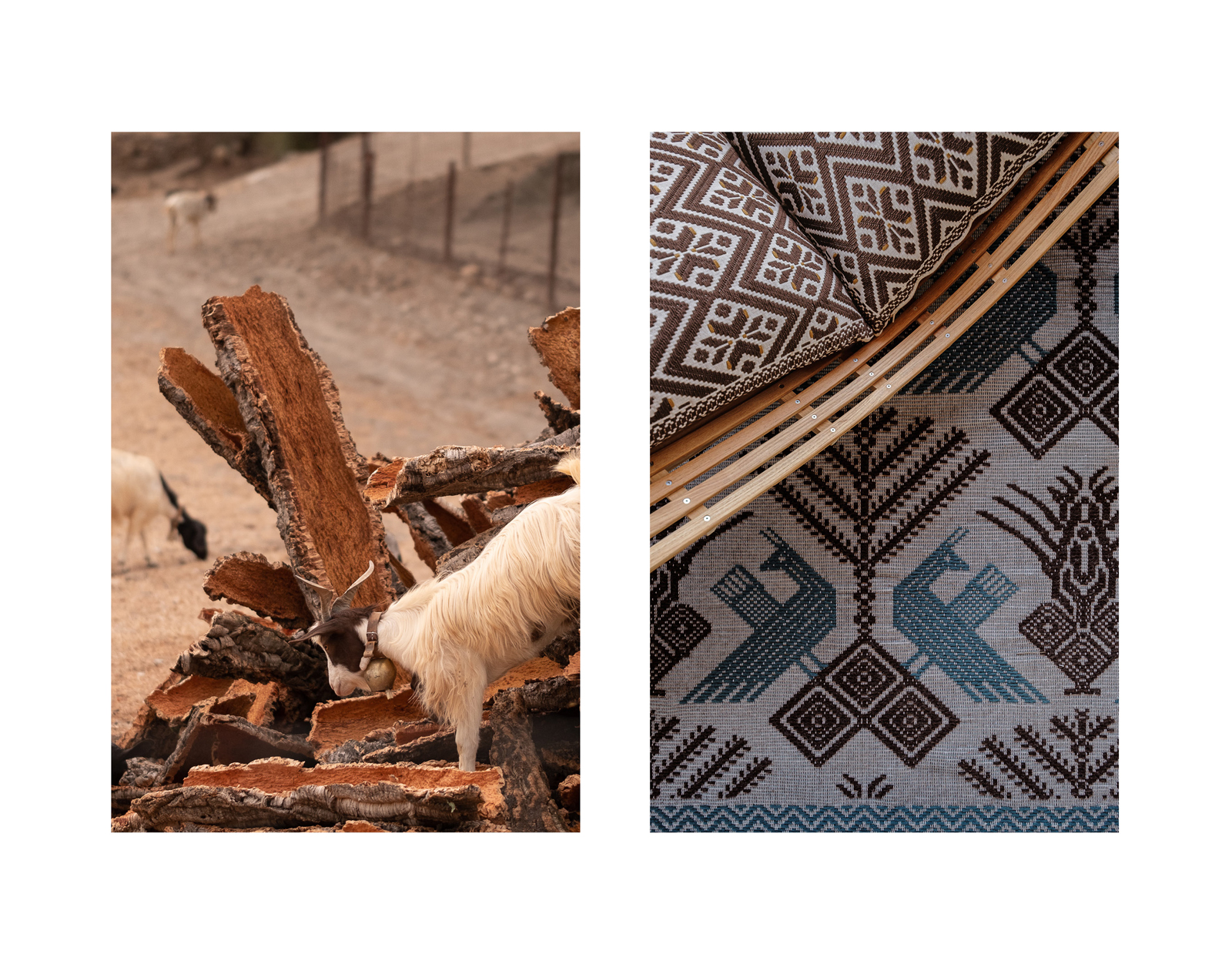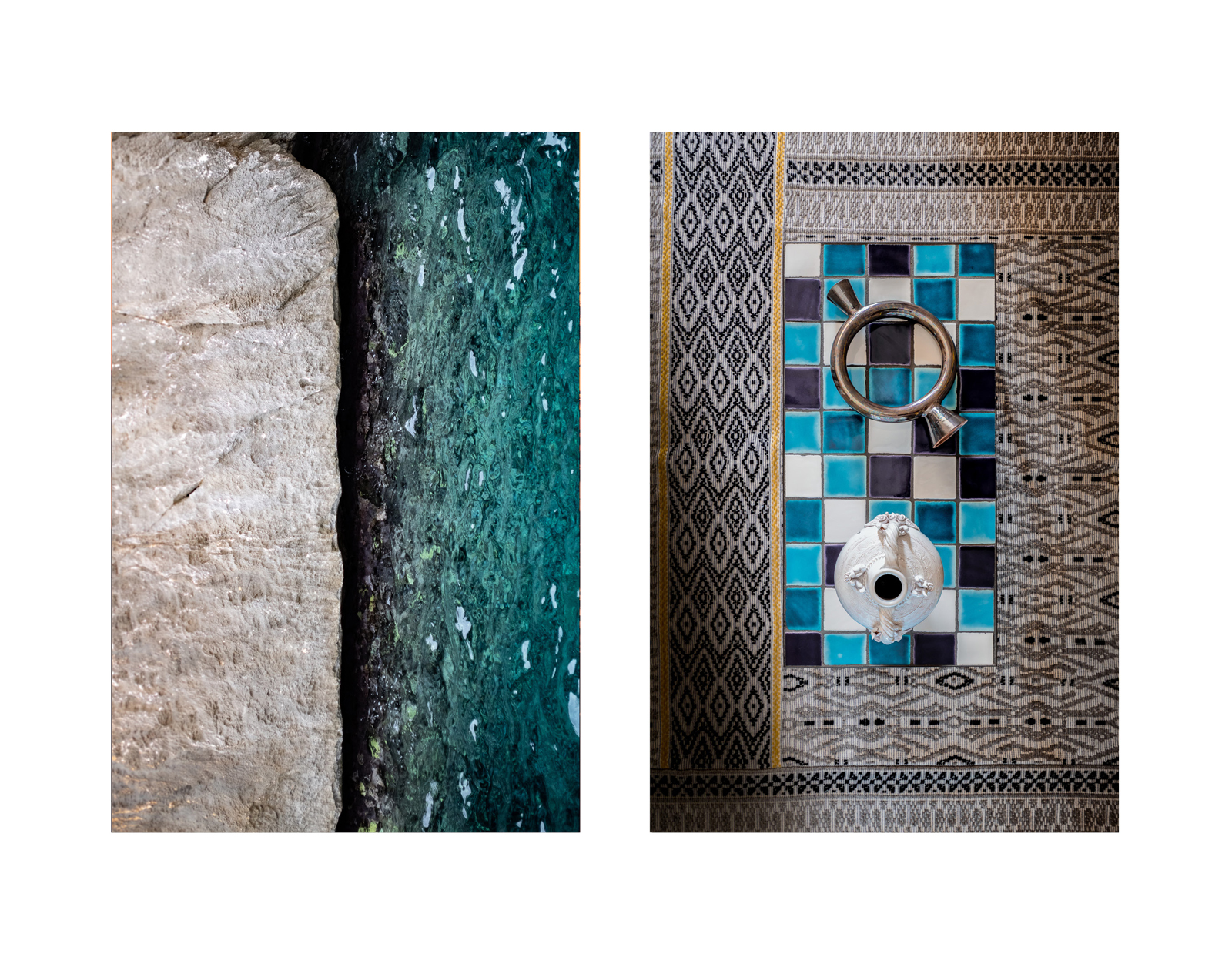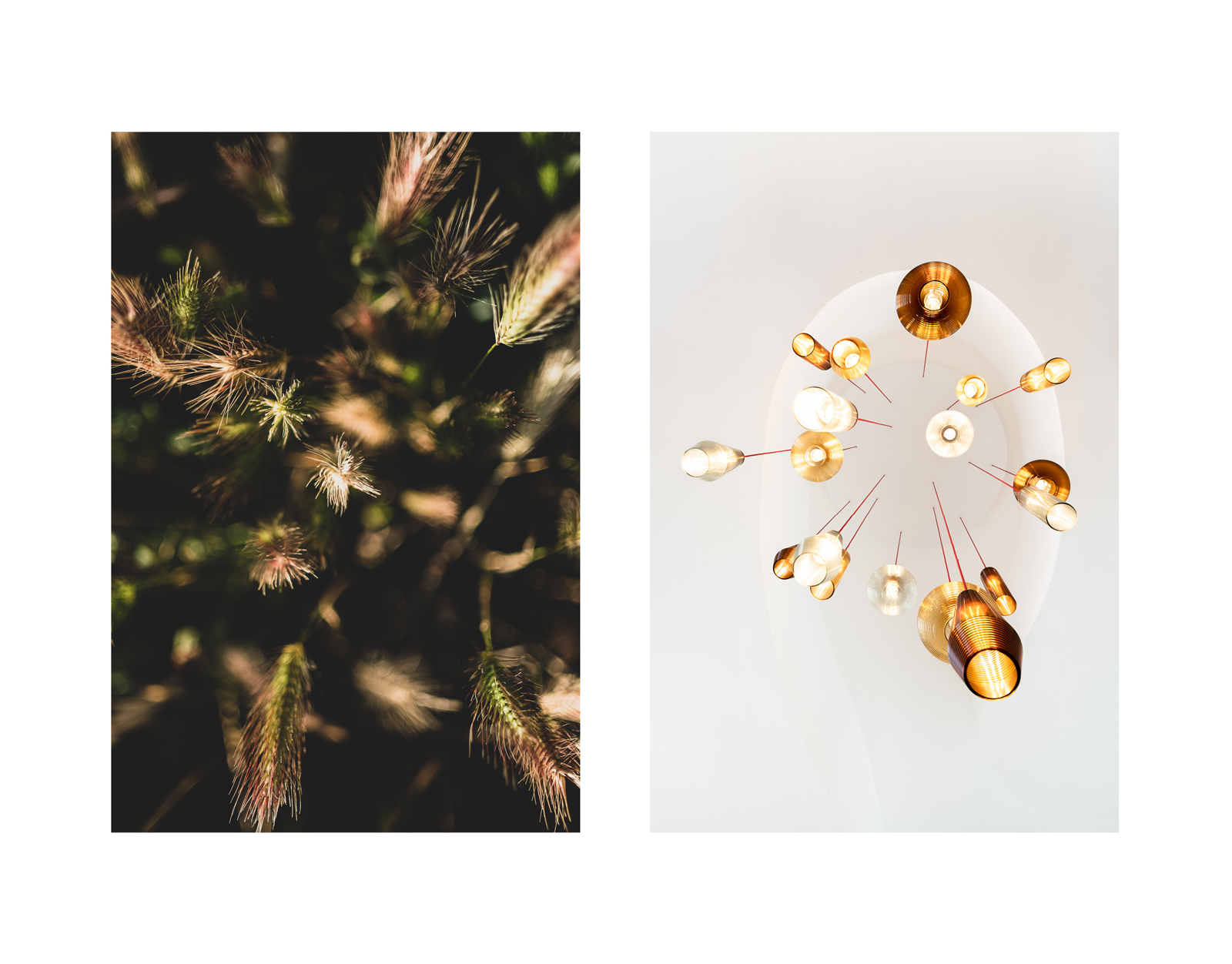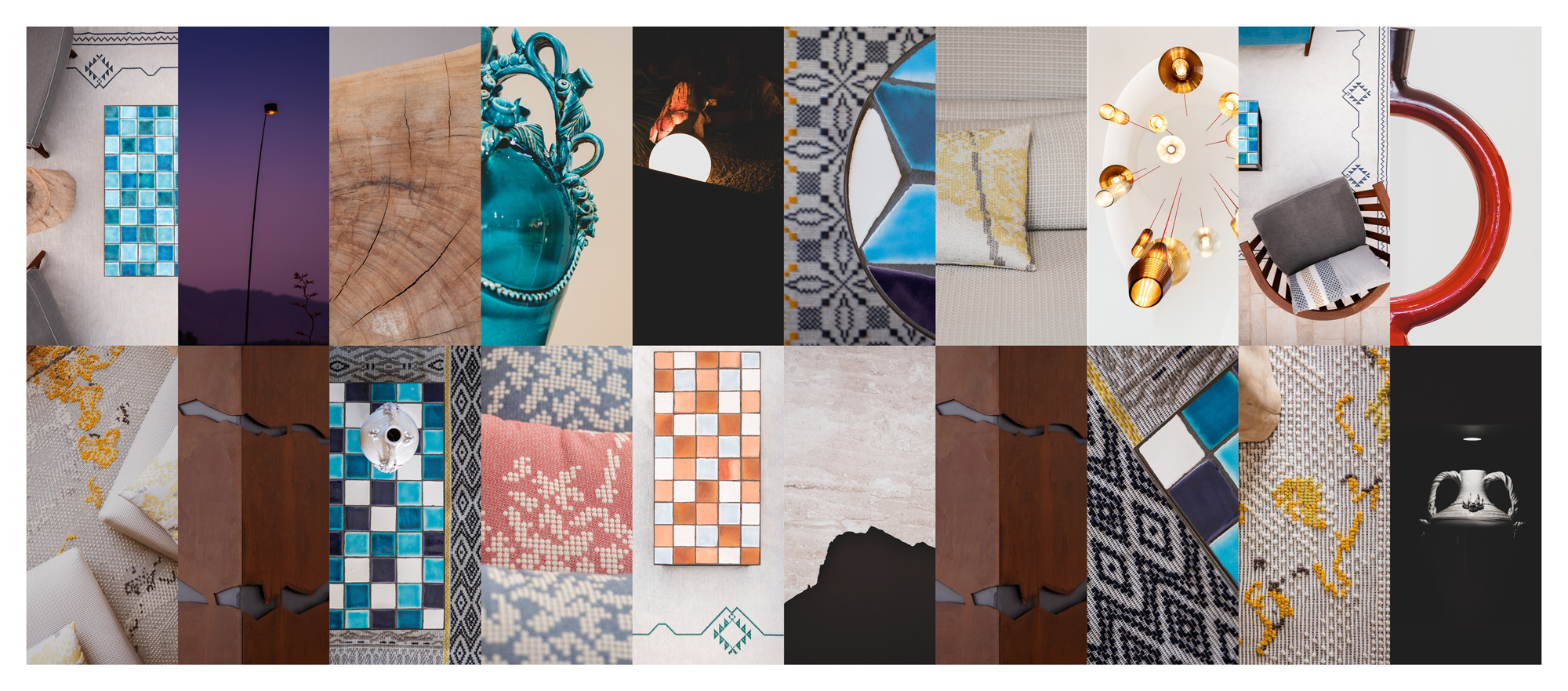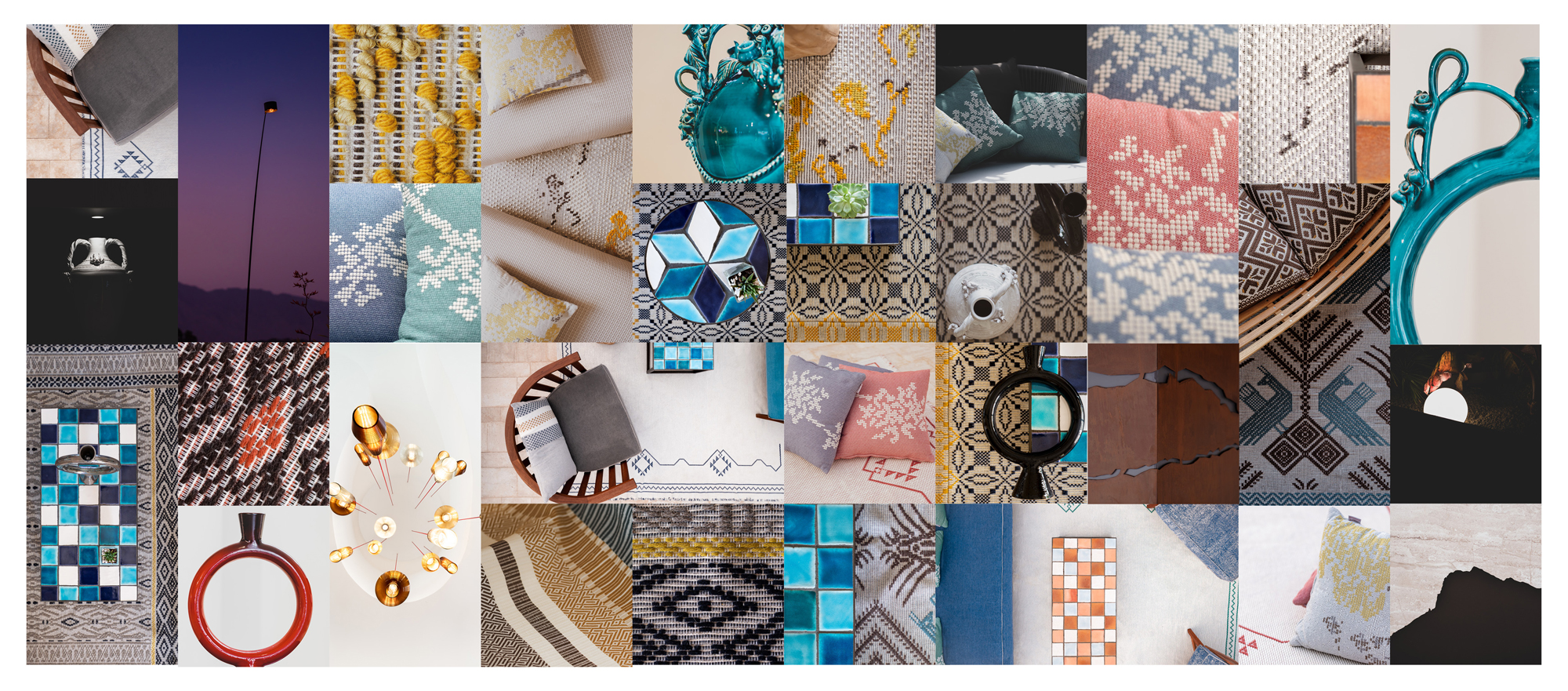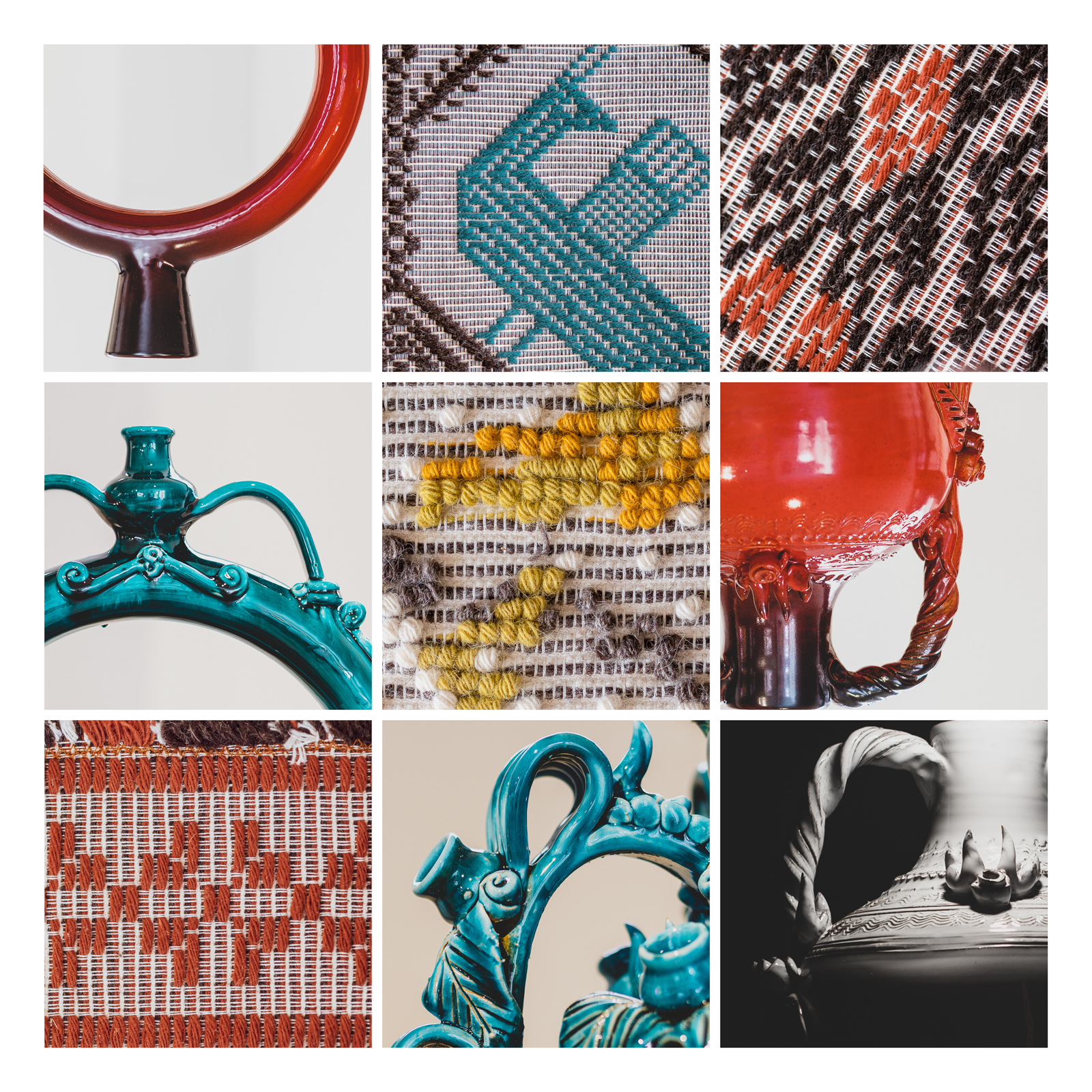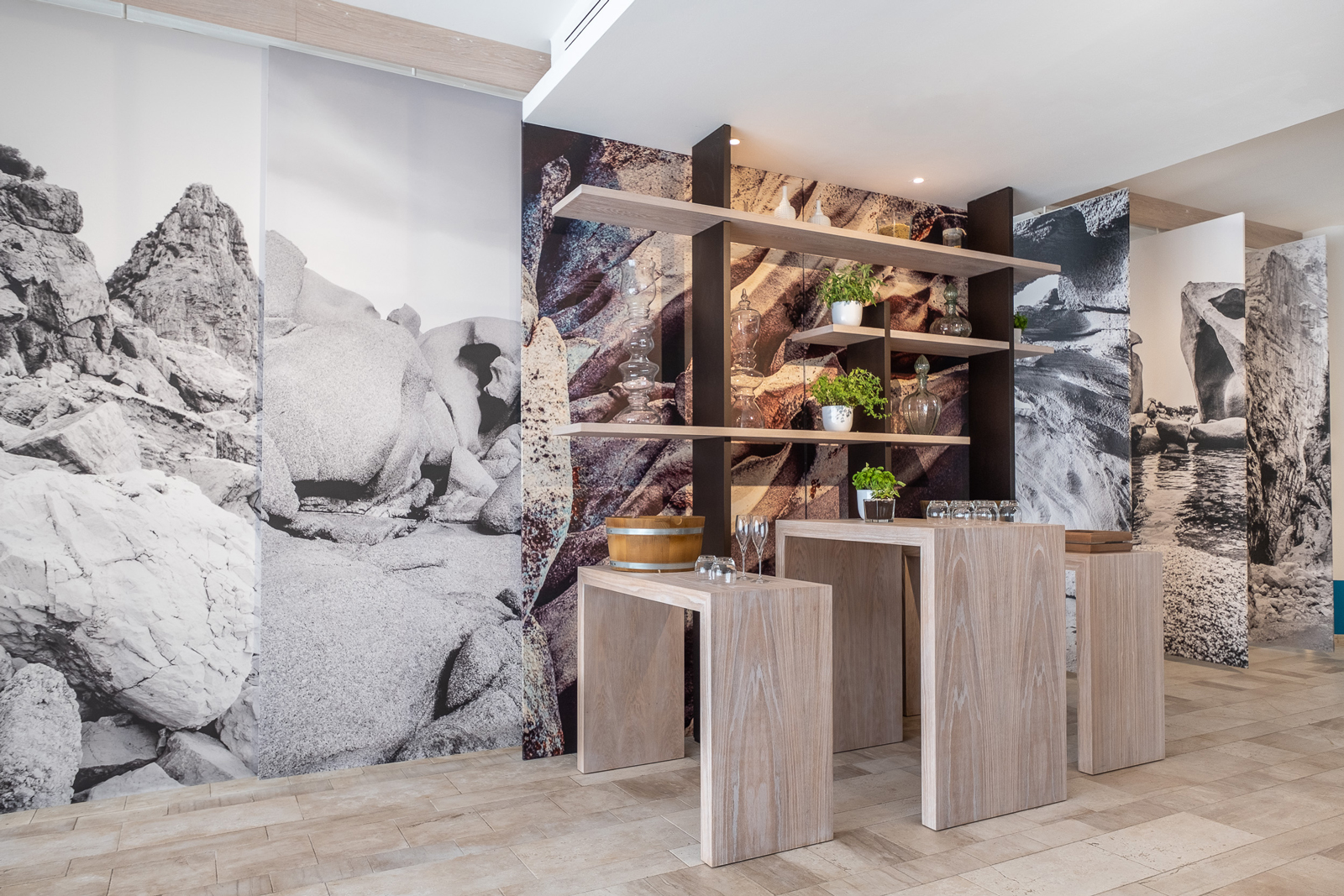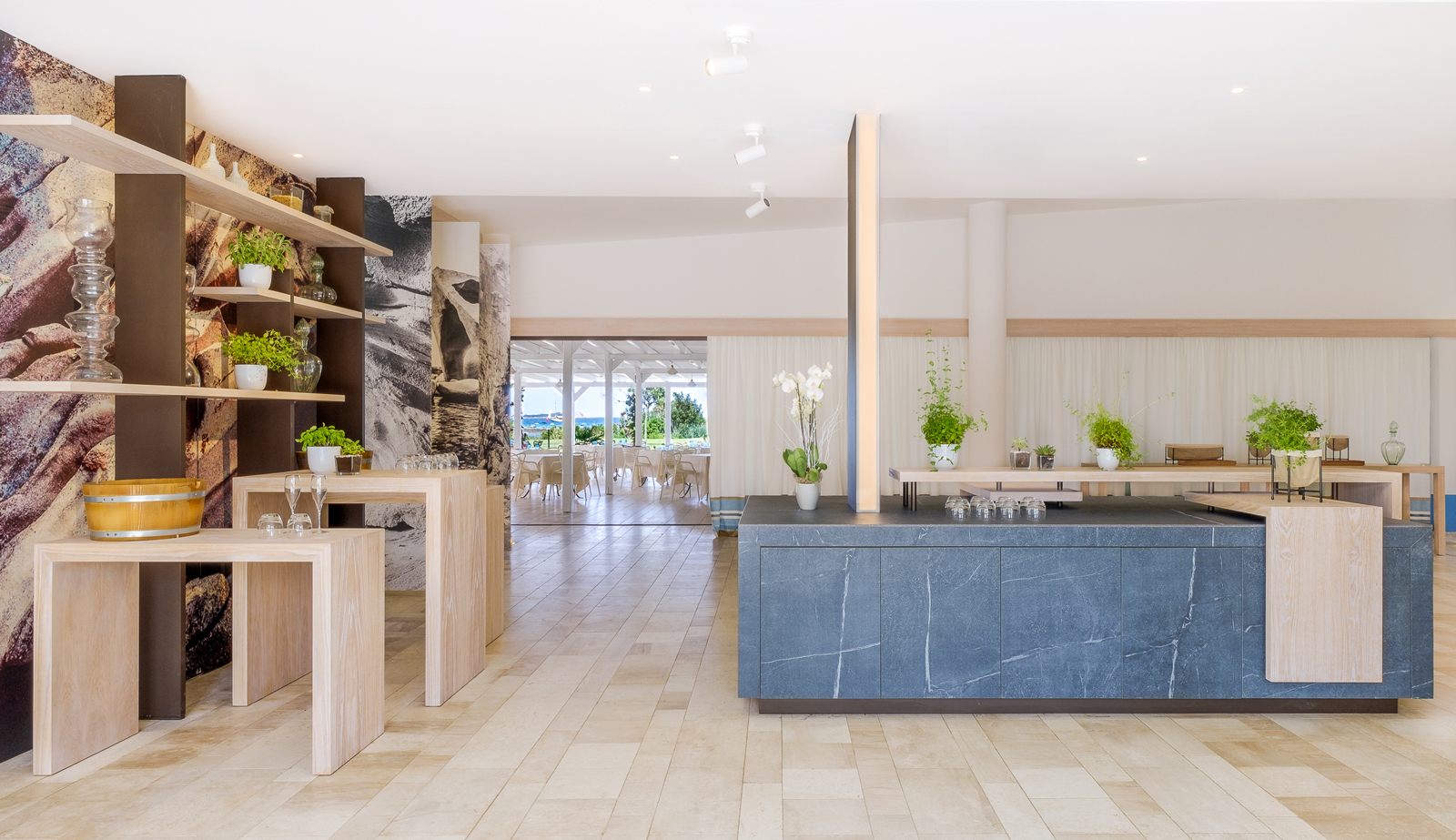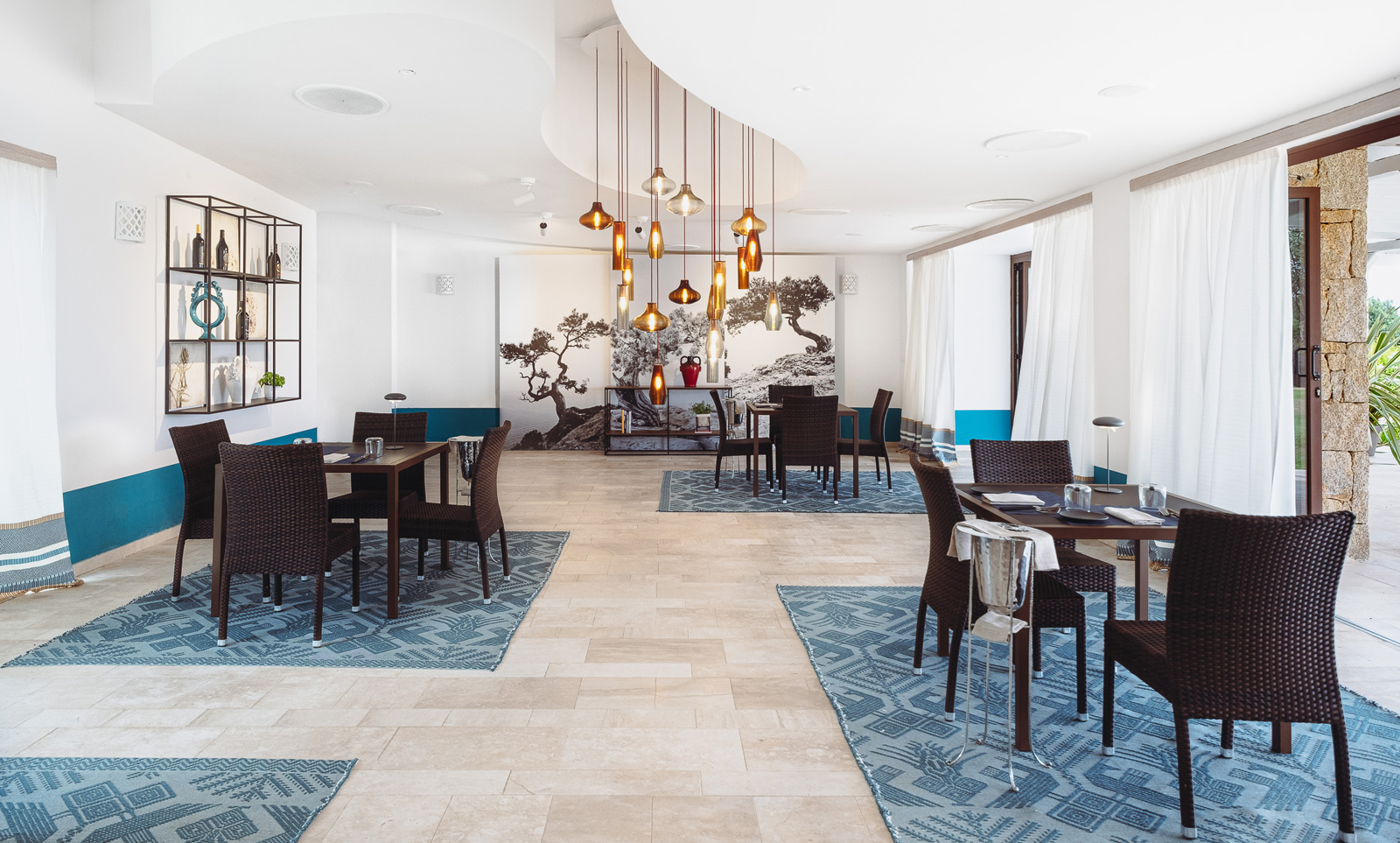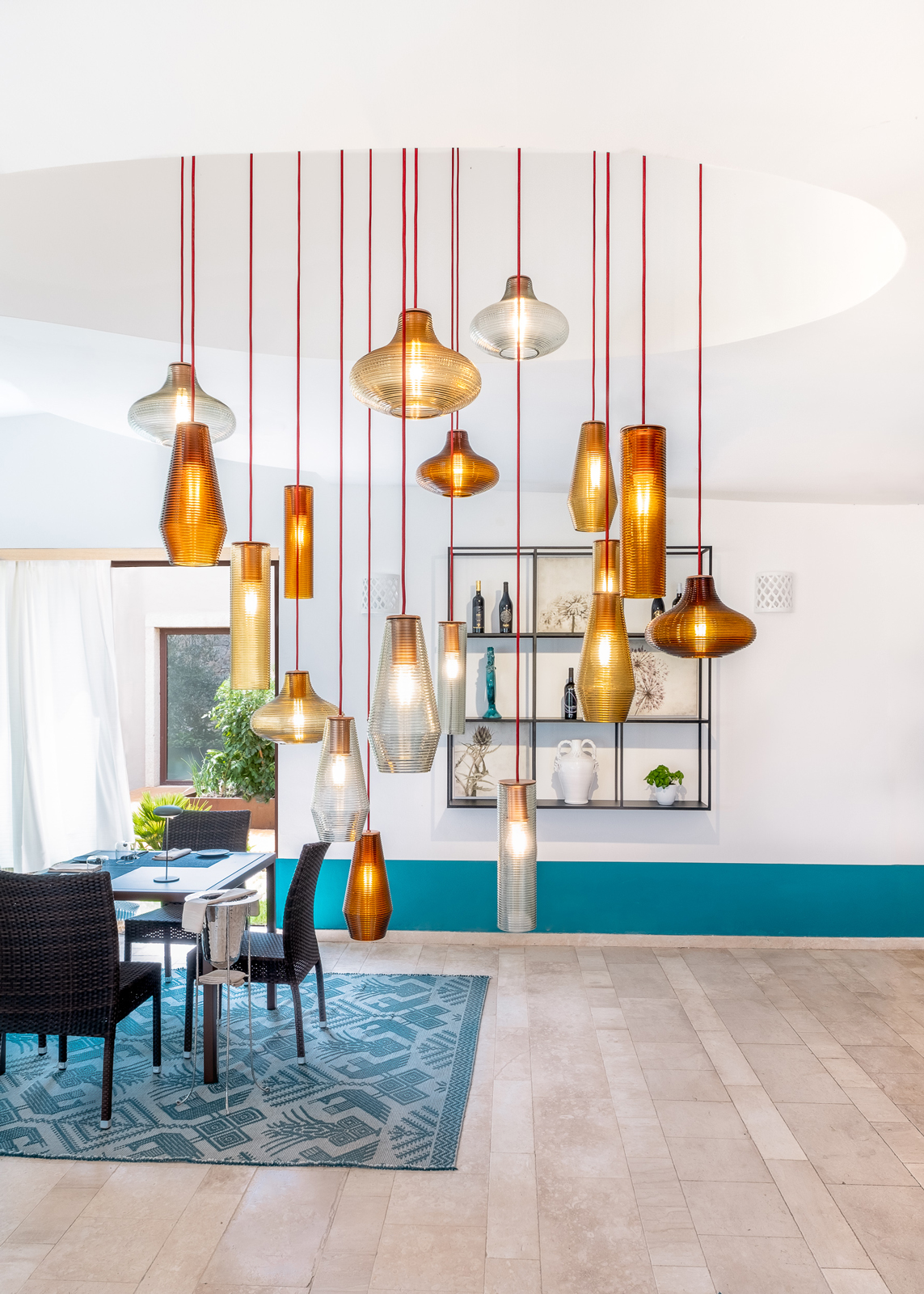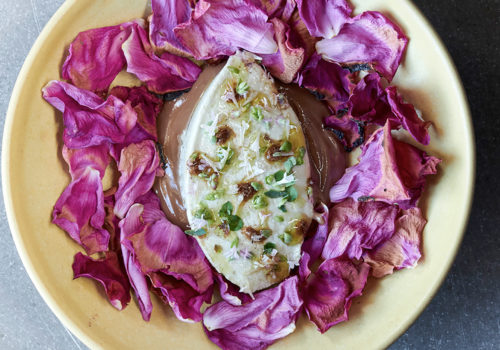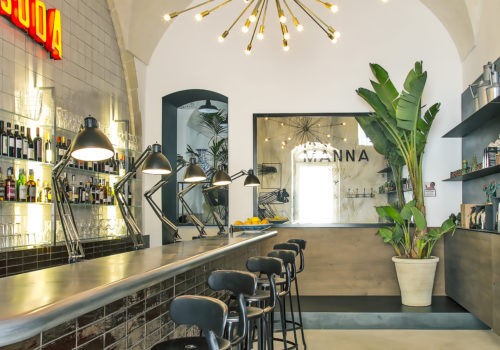Natural landscape, cultural tradition and crafts reinterpreted in a contemporary key
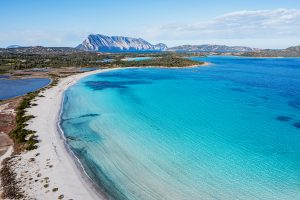 “We are Spanish, Africans, Phoenicians, Carthaginians, Romans, Arabs, Pisans, Byzantine, Piedmont. We are the golden yellow gorse on the rocky trails that droops as large lighted lamps. We are the wild solitude, the vast and deep silence, the splendor of the sky, the white flower of Cistus. We are the uninterrupted reign of the mastic tree, the waves that flow through the ancient granites, the reign of the rose hips, the wind, the immensity of the sea”. The author is Grazia Deledda who talks about her land, her Sardinia. Uncontaminated nature which inspired the redesign of the new Baglioni Resort Sardinia.
“We are Spanish, Africans, Phoenicians, Carthaginians, Romans, Arabs, Pisans, Byzantine, Piedmont. We are the golden yellow gorse on the rocky trails that droops as large lighted lamps. We are the wild solitude, the vast and deep silence, the splendor of the sky, the white flower of Cistus. We are the uninterrupted reign of the mastic tree, the waves that flow through the ancient granites, the reign of the rose hips, the wind, the immensity of the sea”. The author is Grazia Deledda who talks about her land, her Sardinia. Uncontaminated nature which inspired the redesign of the new Baglioni Resort Sardinia.
Ten years after it was built, the hotel facing the island of Tavolara tells its story with a new concept and a restyling project by the architecture and interior design firm Spagnulo & Partner, specialised in the design of luxury hotels and residences in Italy and abroad, and responsible in Italy and abroad for all the interior design projects for the Baglioni Hotels & Resorts group. A 5-star charme hotel, member of The Leading Hotels of the World, in a protected marine environment north of San Teodoro.
From the Maldives to London to Venice – where renovation work has just been completed in time for the guests of the next film festival – to the coast of Sardinia. During the pandemic, the hotel group invested in Sardinia and in June 2021 opened its third resort, immersed in the clearing in front of the beach of Lu Impostu, less than half an hour from the port and airport of Olbia, in direct contact with the elements of nature, highlighted in many of the architectural choices: the granite of the façades, the uneven Orosei stone flooring, the pastel aquamarine and blue colours of the walls in the common areas, the rough lime of the bedroom walls.
The nature of the north-eastern Sardinian coast together with the cultural tradition of the island were the elements that inspired the project, which combines architecture and design, speaks of craftsmanship and trades to be explored anew. An experience that brings together usages and customs connoting a specific cultural identity.
Some traditions in particular were rediscovered and reinterpreted in a contemporary style, constituting the essence of the choices in a custom-tailored design.
The fabrics and carpets are by Mariantonia Urru, used primarily in the version in relief of the Pibioes technique (which entails the use of small needles around which the thick wool weft is twisted to create a compact grain that produces a heavy fabric, 5 to 10 mm thick, characterised by a stippled pattern, ed.note), or the Piana technique (3 to 5 mm thick with a linear pattern). Carpets made with traditional designs, reinterpreted in terms of colours and motifs, have been used for the headboards of the beds, in the carpets of the common areas and the rooms, in the pillows and upholstered seating, in the curtains. The dominant colours in the project – green, blue, ochre and brick red – were used in a variety of geometric patterns and textures, which distinctly define each of the 78 rooms and suites, as well as the main public areas.
The story of the fabrics is a tale that speaks of the past and the present, tying together innovation and tradition: Mariantonia Urru has maintained the quality over time of a product that represents a technical and cultural legacy for Sardinia, opening the doors to the collaboration with international designers, and supporting them in the search for new technical solutions.
The Baglioni also embraced the handmade ceramics by Walter Usai, a “strexiaiu” craftsman (literally a dish-maker) who carries on a family tradition started in 1850 by his grandfather and continued by his father. The earths in the area of Assemini have an excellent composition and so have favoured the tradition of wheel-turned pottery. The rooms and the common areas of the new resort feature bridal jugs, jugs from Assemini, ring amphorae in natural enamel shades of green, white, red and orange.
Walter Usai Ceramics can count on the finest clays, distinguished by the special colour they are given by the iron and other minerals in them.
These clays stand out from others for their excellent output: they are ideal to prepare and to shape, but fragile when it comes to firing, making the “strexiaius” of Assemini real masters in the firing of these beautiful materials. Before 1972, the ceramics were fired in outdoor kilns which contained a large number of pieces, the work of several weeks; this required an expert understanding of the weather: before setting up the kiln, it was important to know what the sky might be foretelling about how the weather might change, because if it rained, weeks or days of work might have been lost forcing the ceramic artist to start all over. Since 2002 Walter’s work has evolved: as a master ceramic artist, who grew up in his father’s workshop, he has brought innovation to the family trade.
Fabrics, ceramics, with space for the tradition of handcrafted ceramic tile: an ancient expertise that a local company, Cerasarda, continues to develop on the territory. Ceramic inlays enamelled by hand are inserted into the bleached oak of the rooms, combining the modernity of the design and the flavour of tradition, thanks to the depth of the colour in the blue, green and red enamel.
The scenographic power of the Sardinian landscape and life experience is also interpreted in photography, on large panels selected and created with Alidem in Milan, to reveal details, materials, suggestions.
Italian luxury in the heart of nature. Hospitality that does not neglect food and wellbeing: two restaurants, with food experiences curated by Michelin-starred chef Claudio Sadler (with the Taste format), and a Spa by Insium. The new resort is one of the few directly overlooking the sea. Families with smaller children can enjoy the ample open spaces, the swimming pool and the kids club.
One of the most suggestive common areas is the Lounge terrace built on the flat roof of the bar, from which to enjoy the light and dark blue line of the horizon over the sea. Here too colourful carpets and fabrics, the ceramic of the side tables, the stone of the floors, bring to mind the value of the project in terms of identity, complemented by the contemporary gesture of the sofas, the armchairs and the lamps, and the minimal design of the Orosei stone and Corten steel bar, which in a play of scenographic reference, displays a crack along the front: it is the jagged edge of Tavolara’s rocky coast.
Cover: Baglioni Resort Sardinia, Maddalena Suite Living Room. Ph. ©Barbara Pau
Translated by: Olga Barmine
© ALL RIGHTS RESERVED


